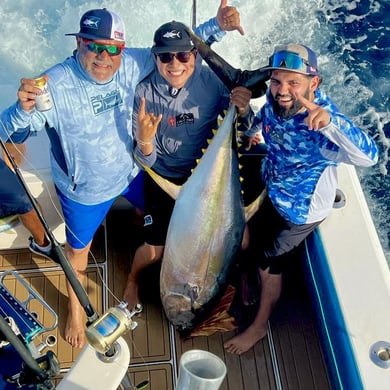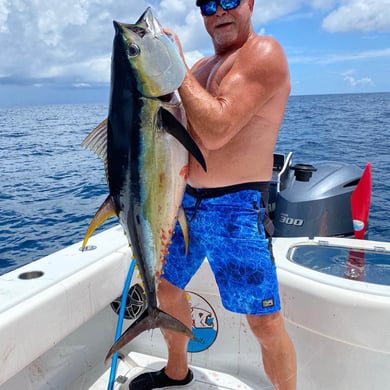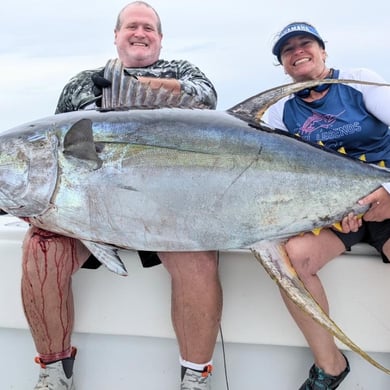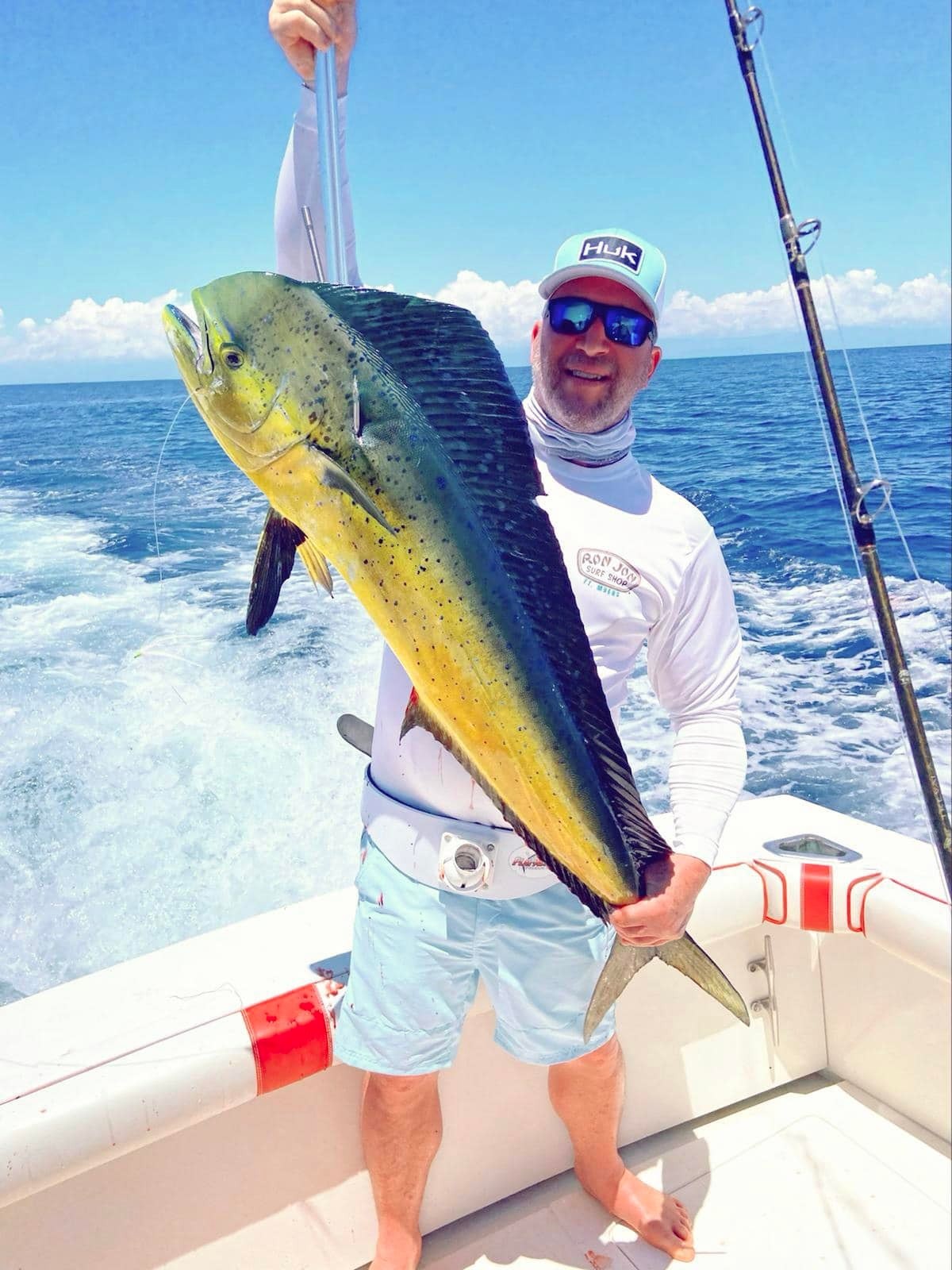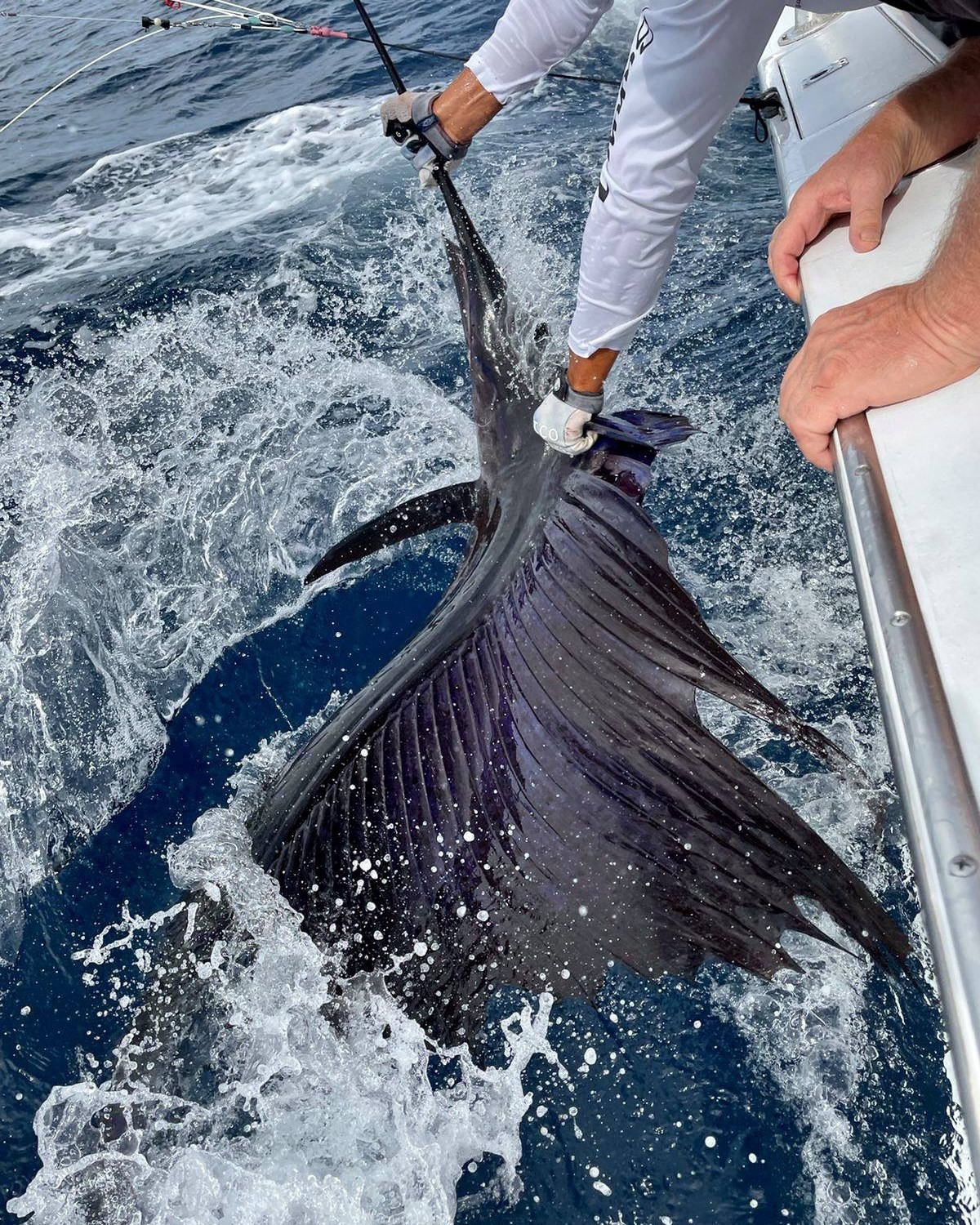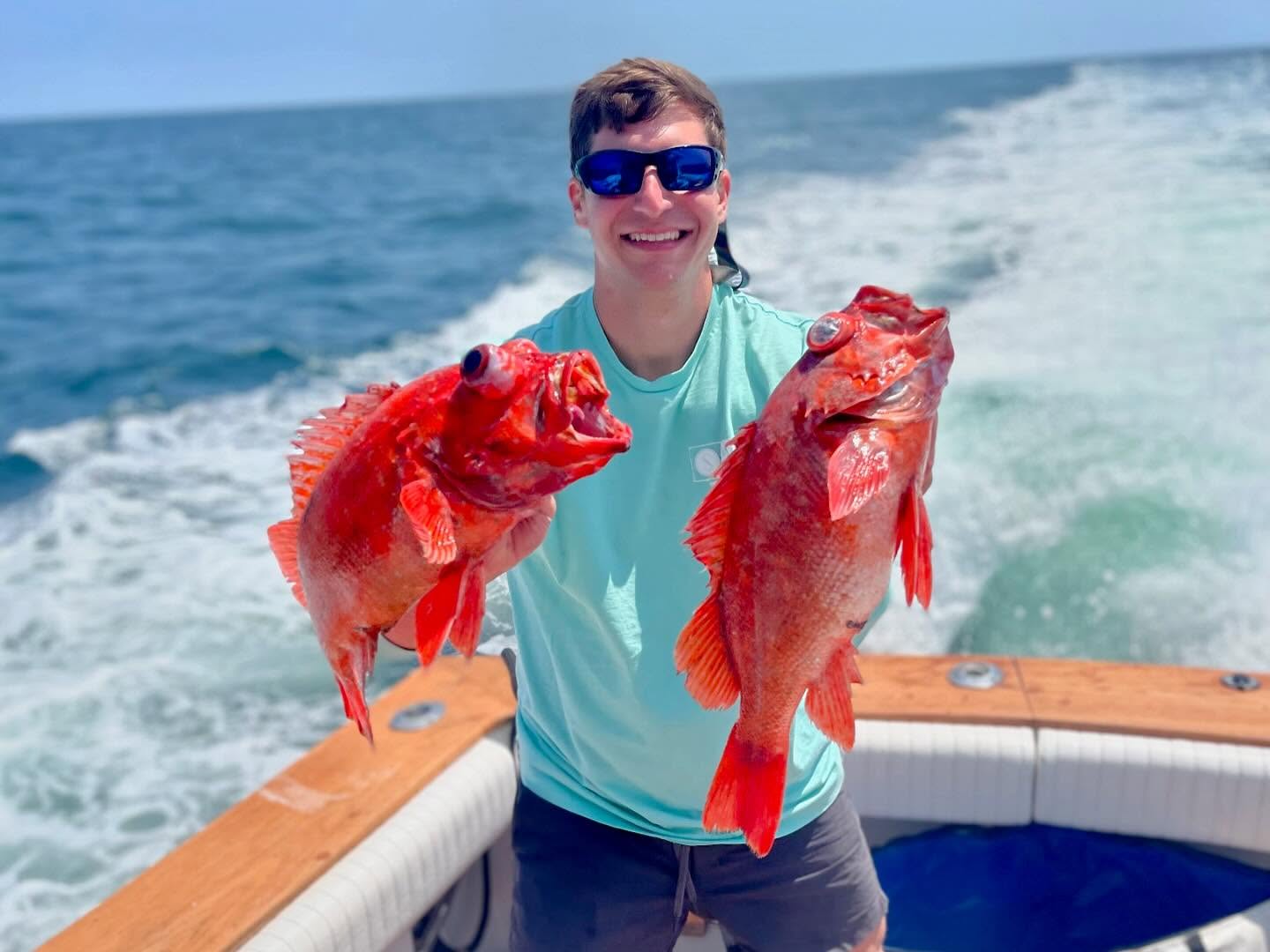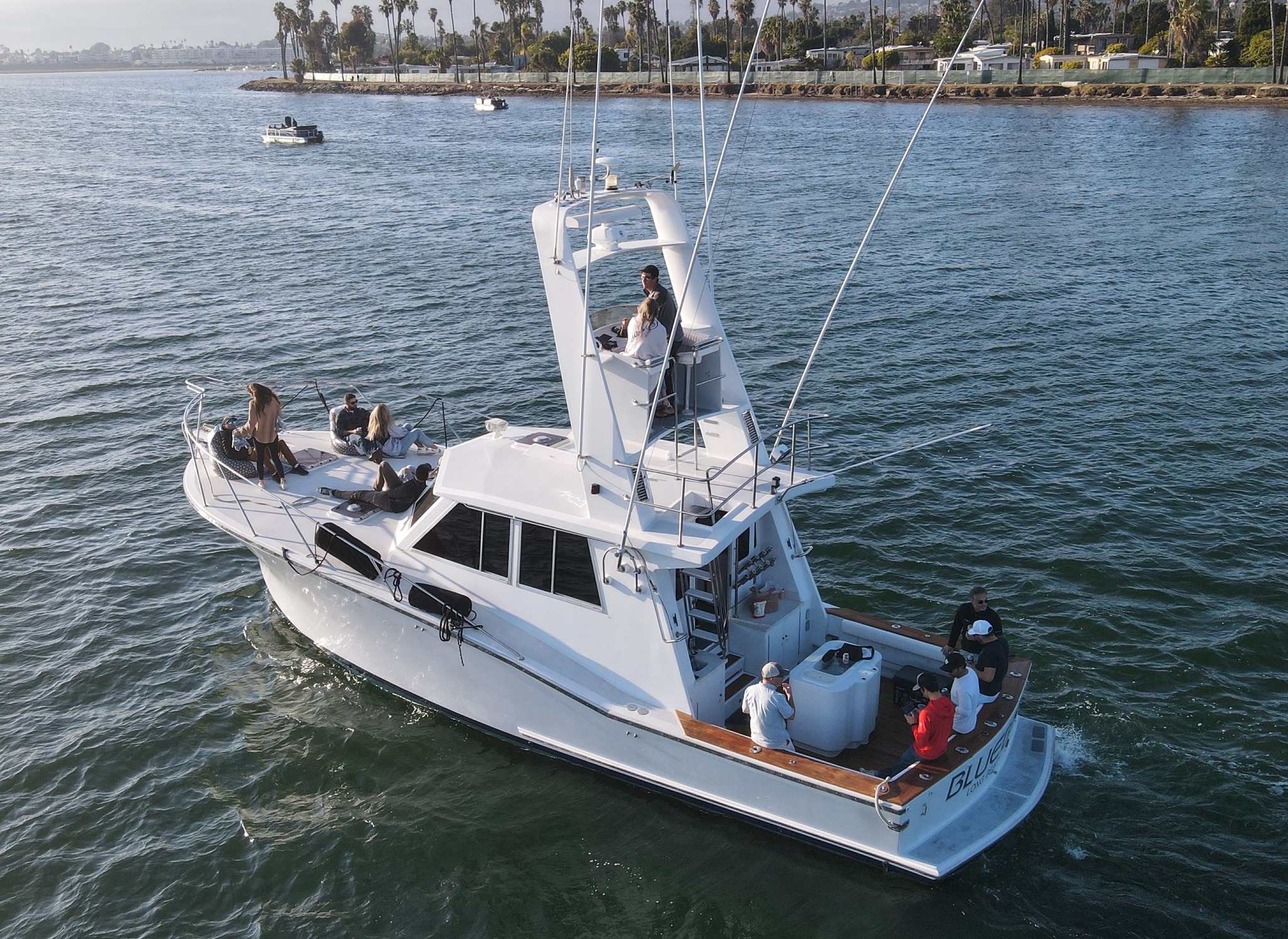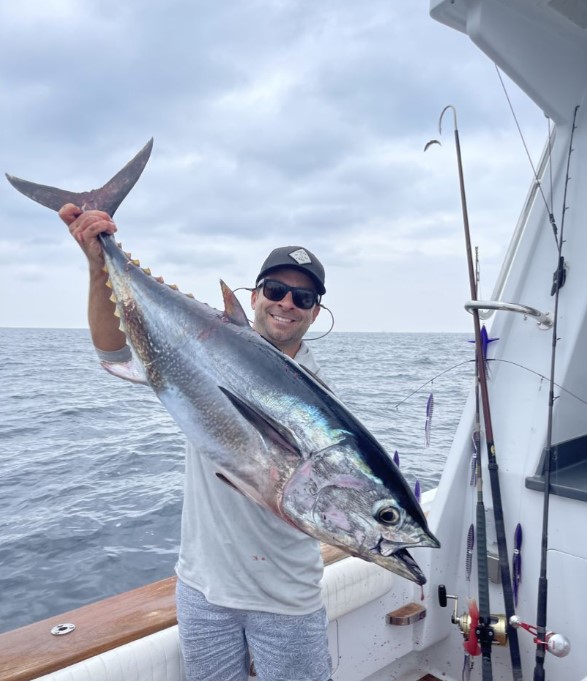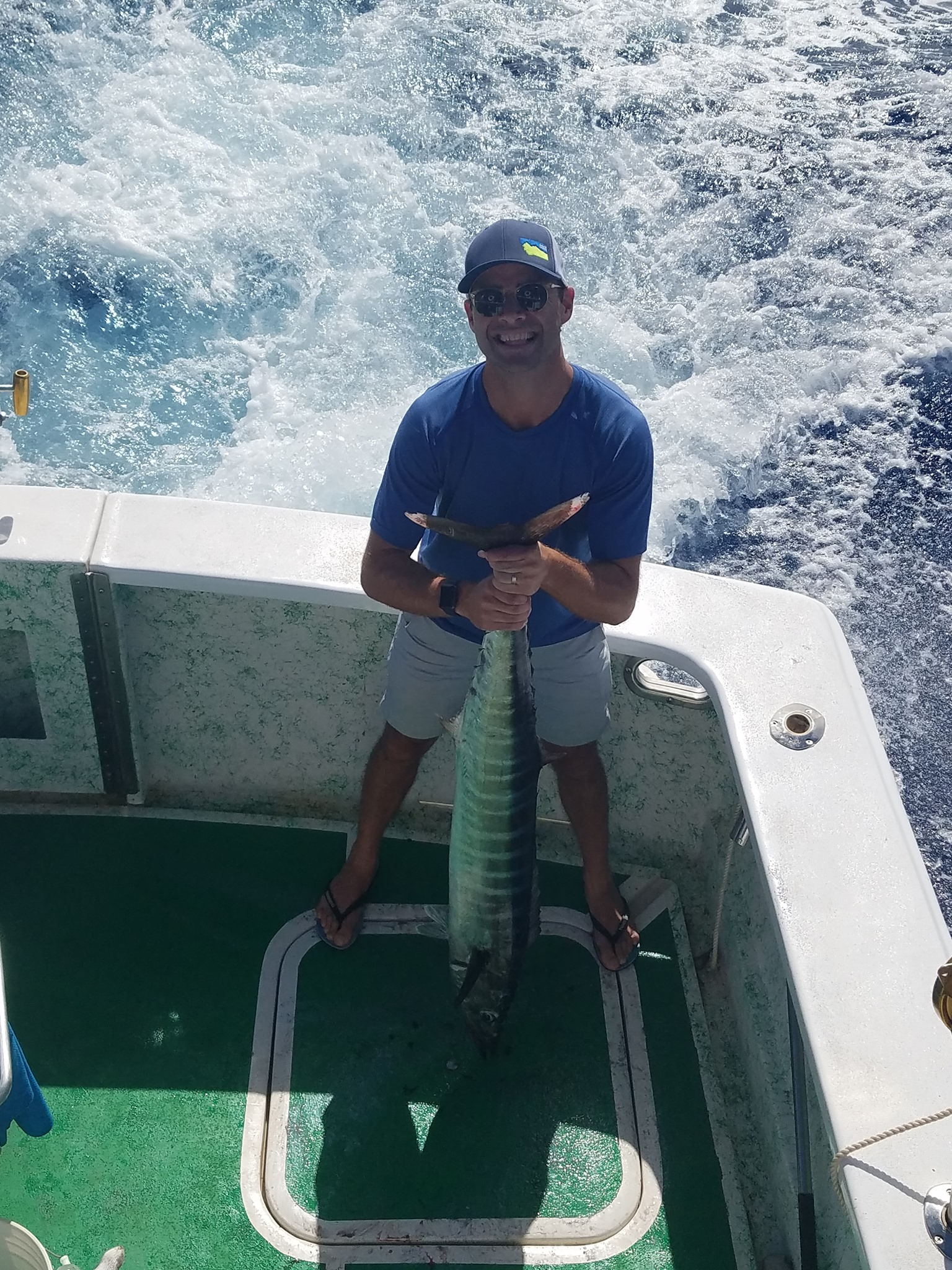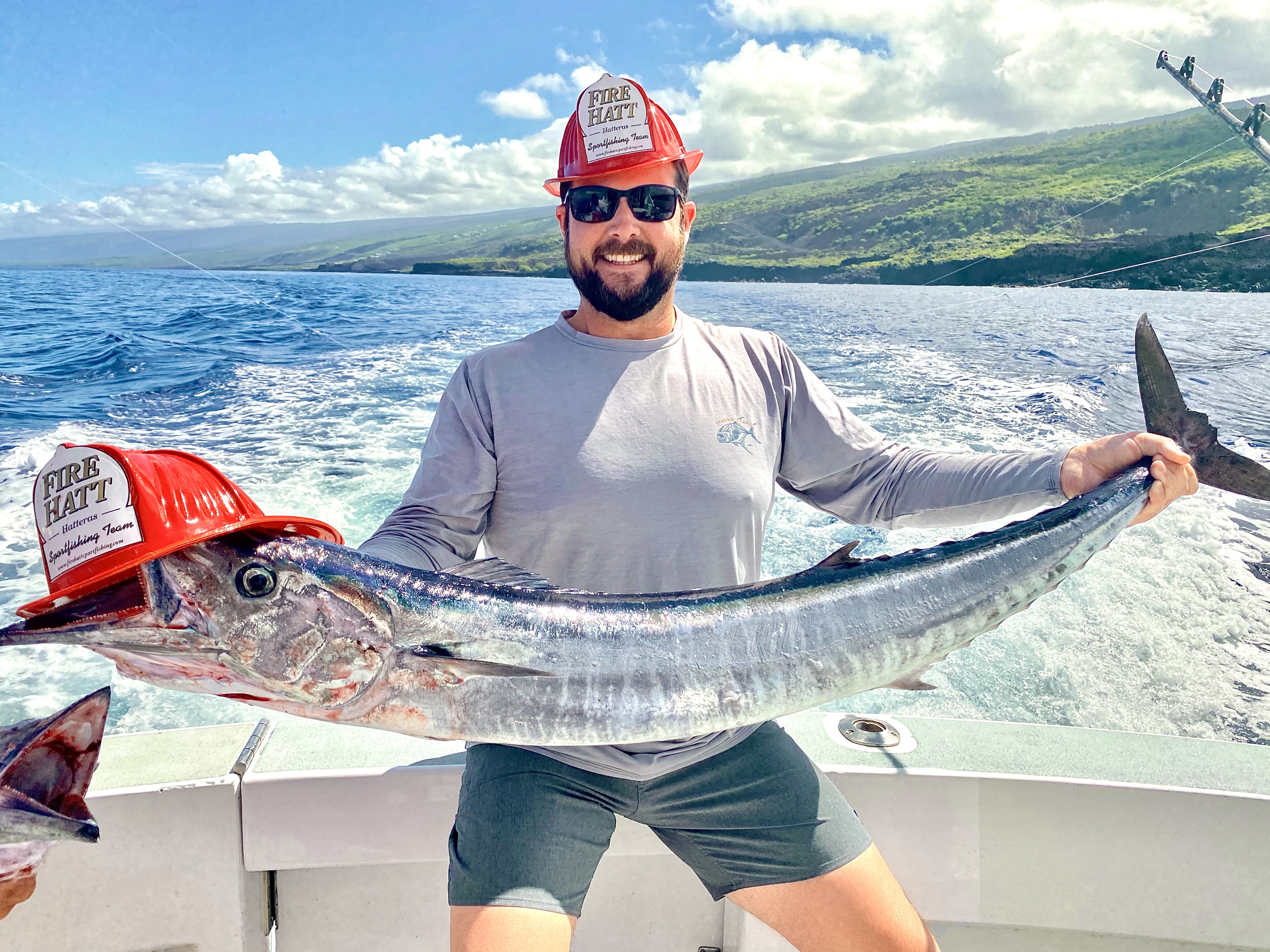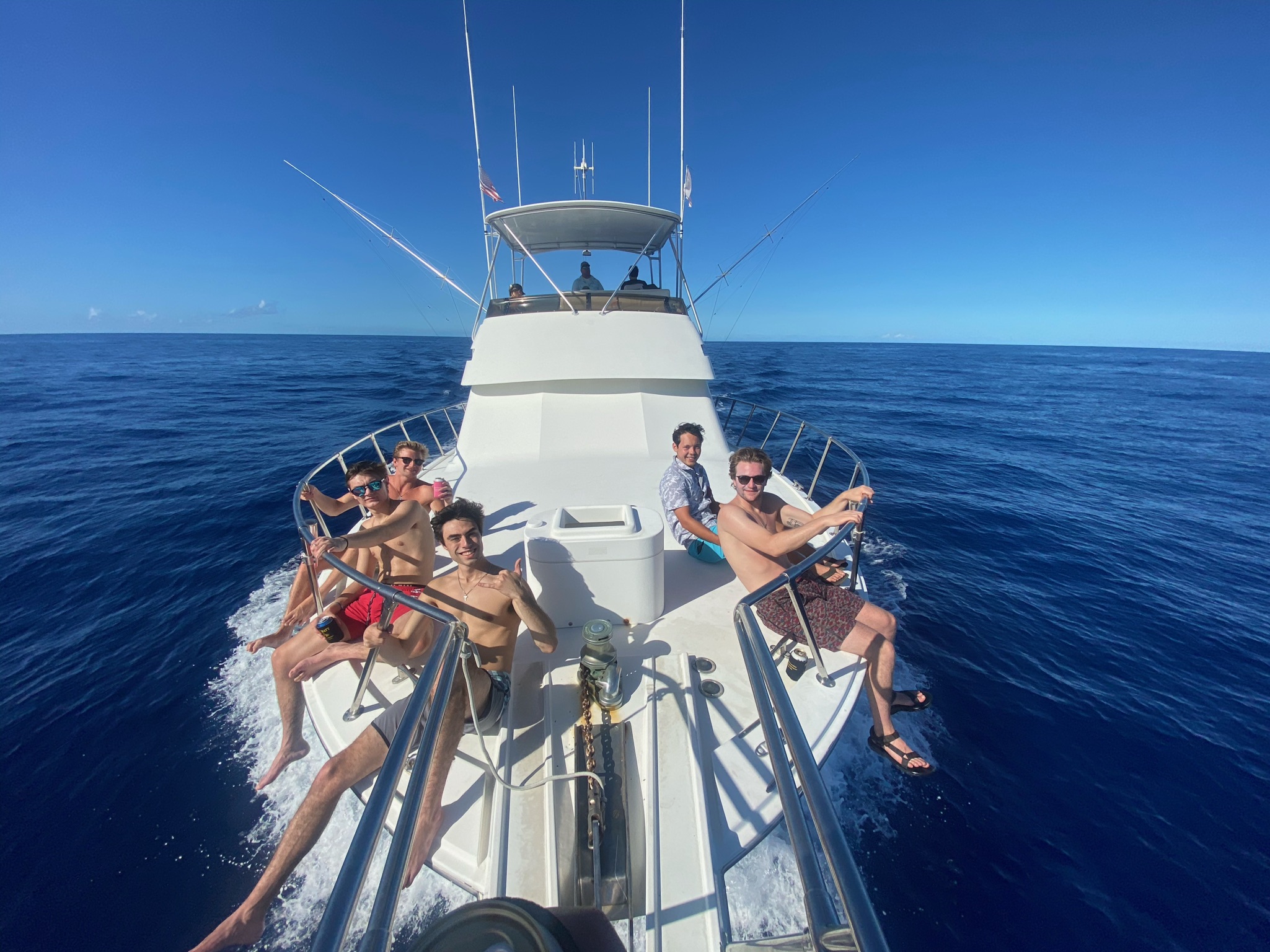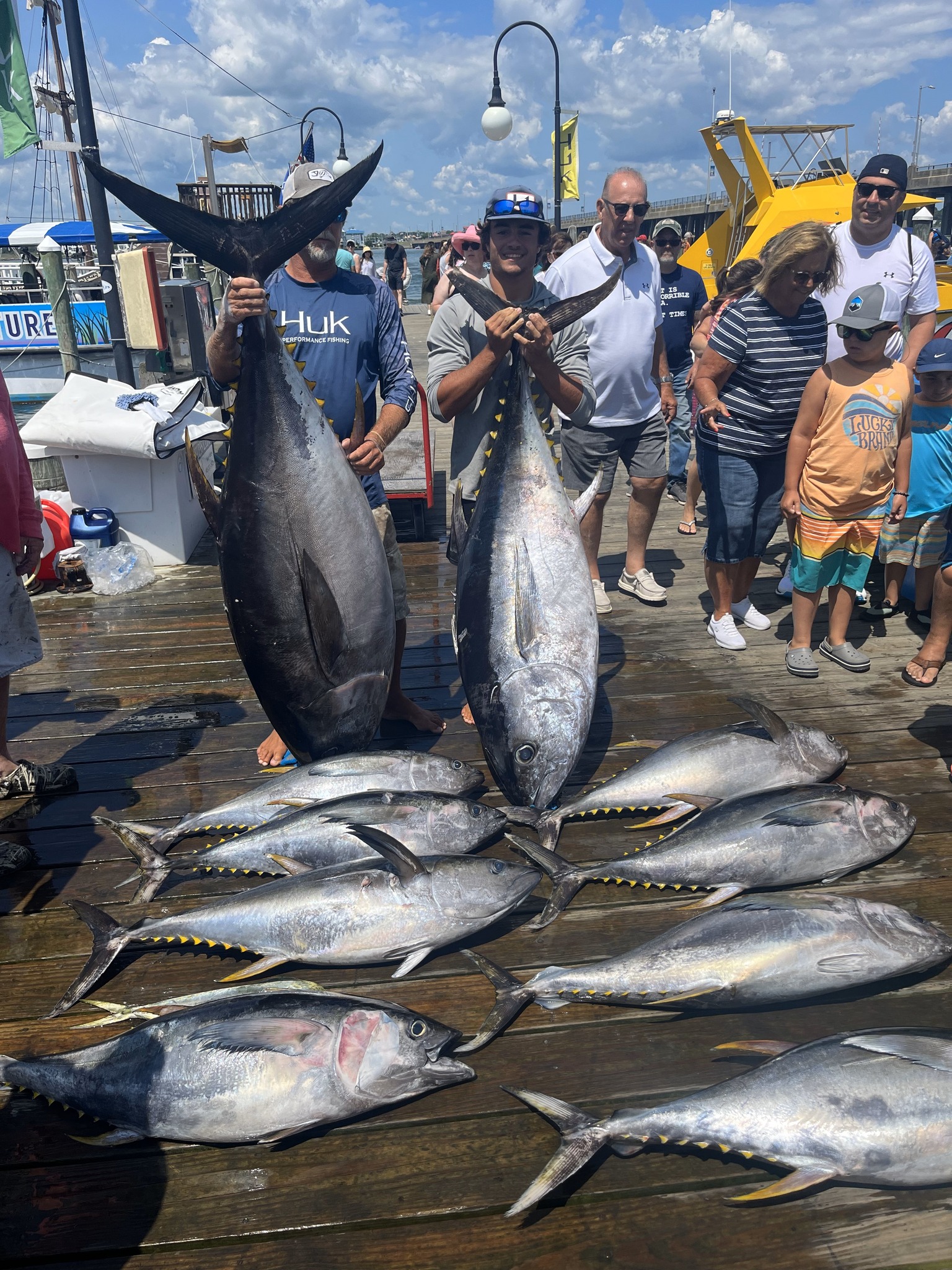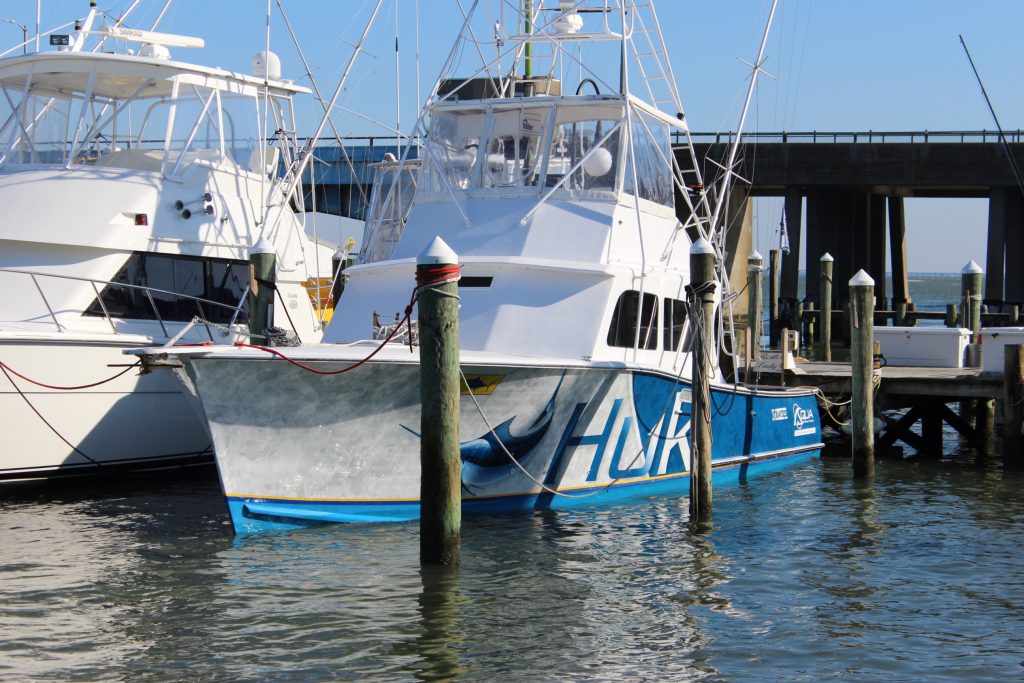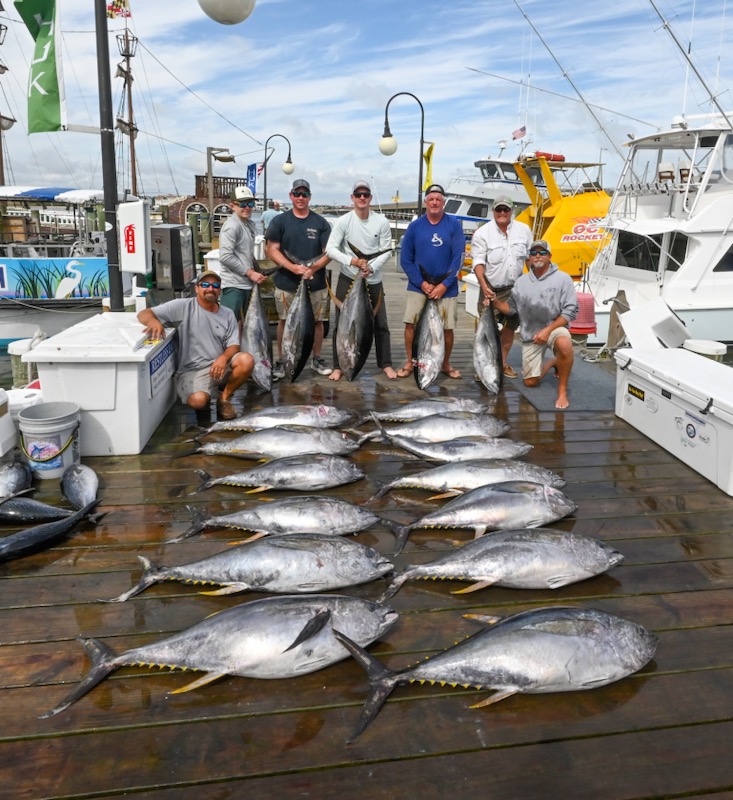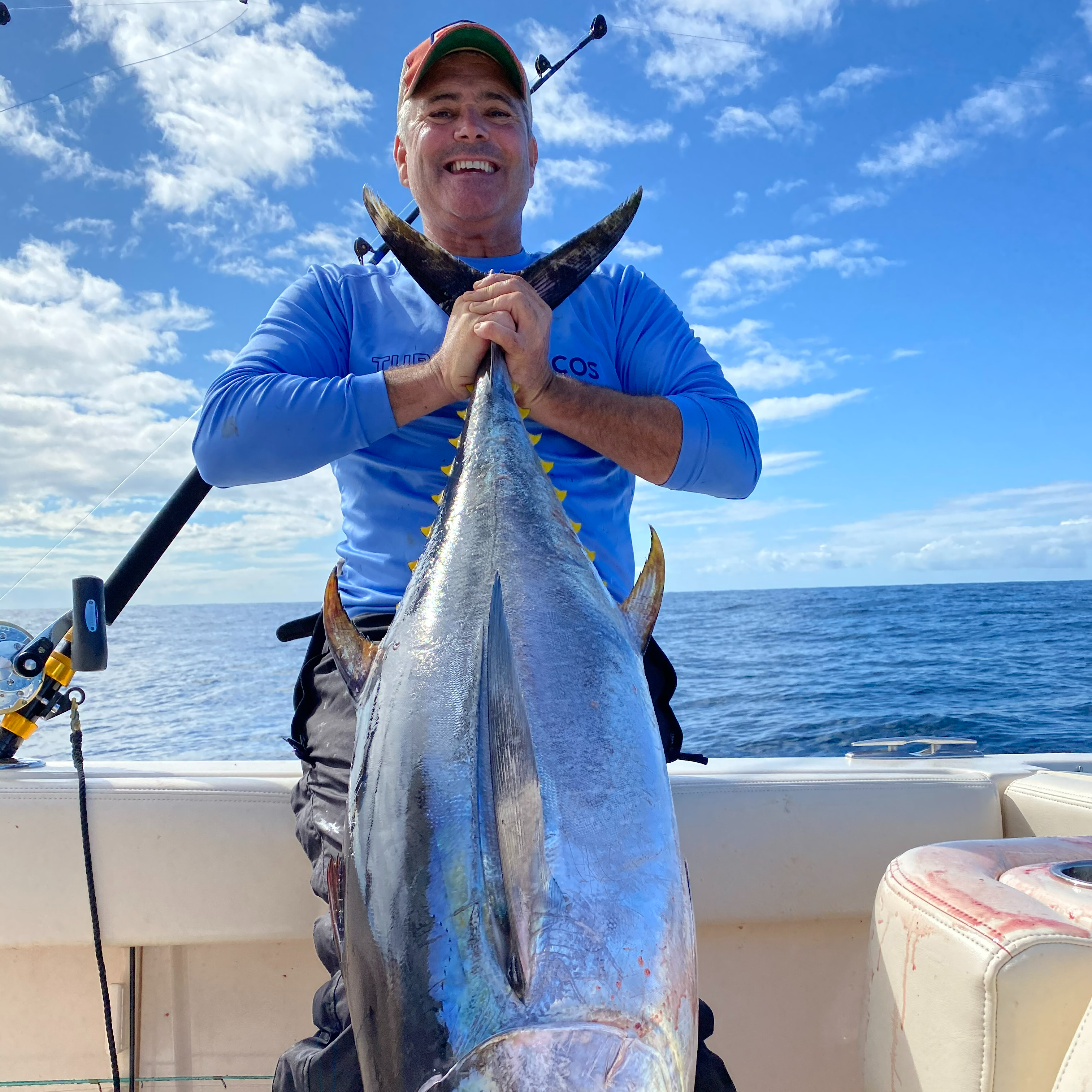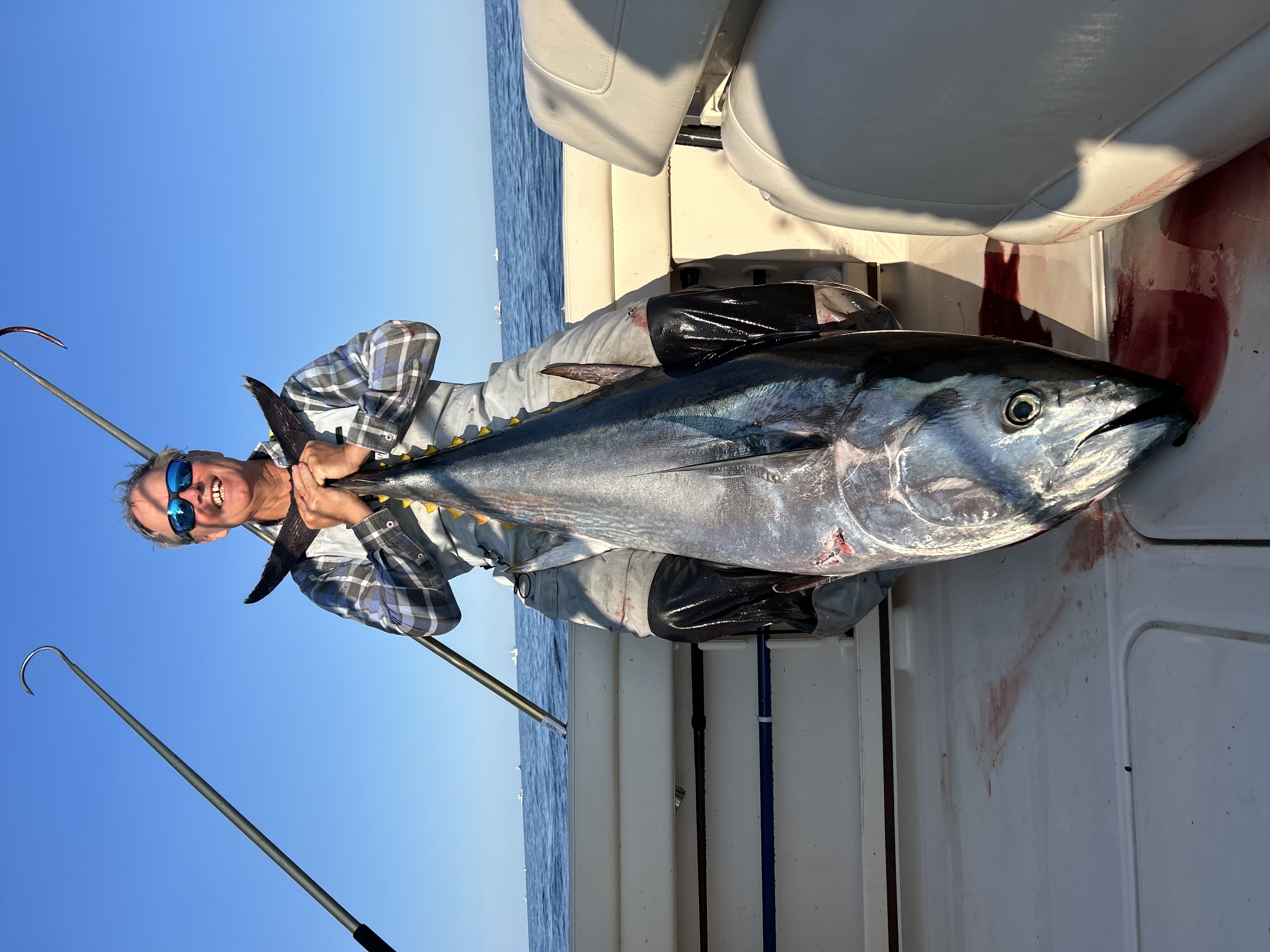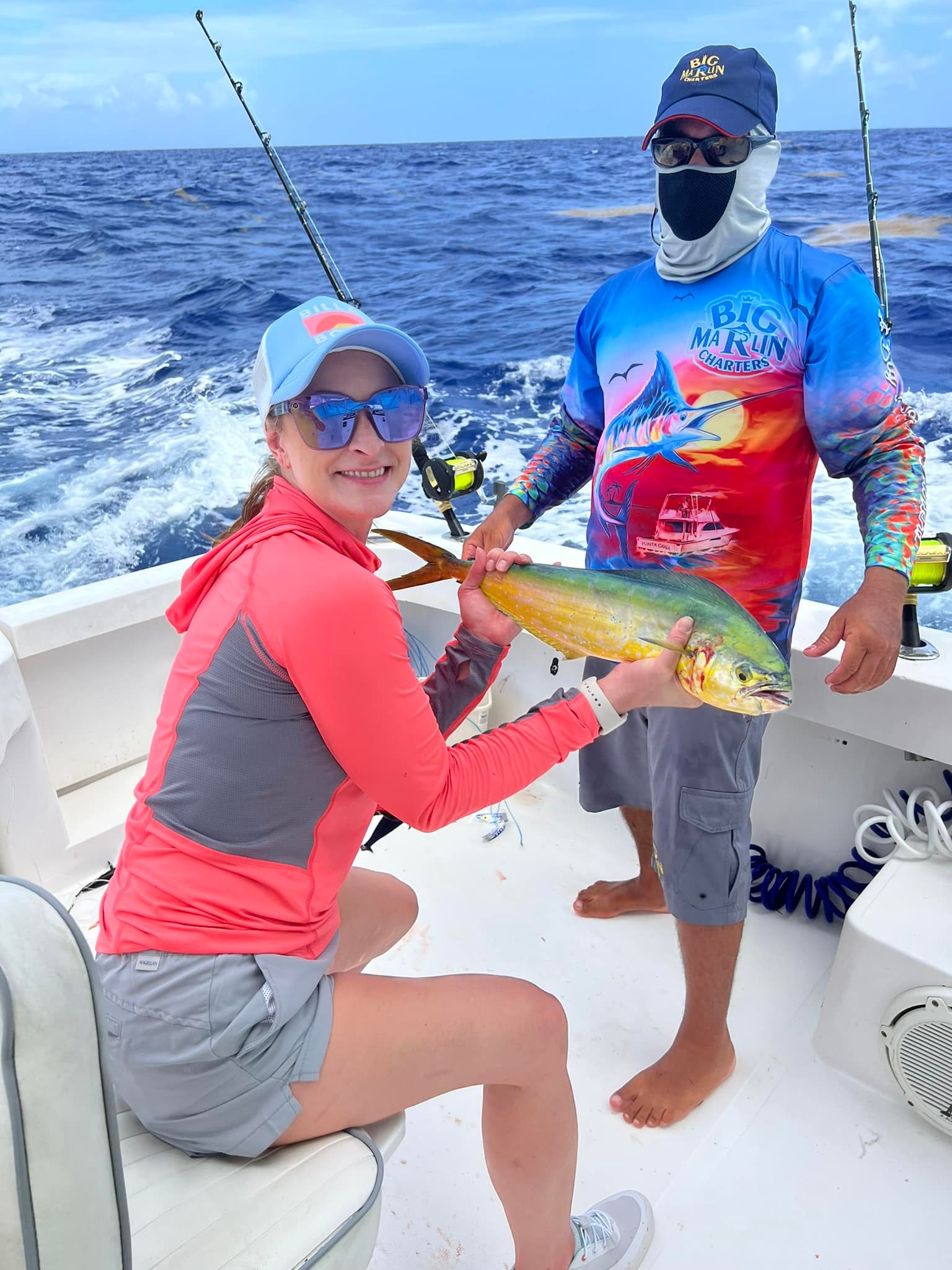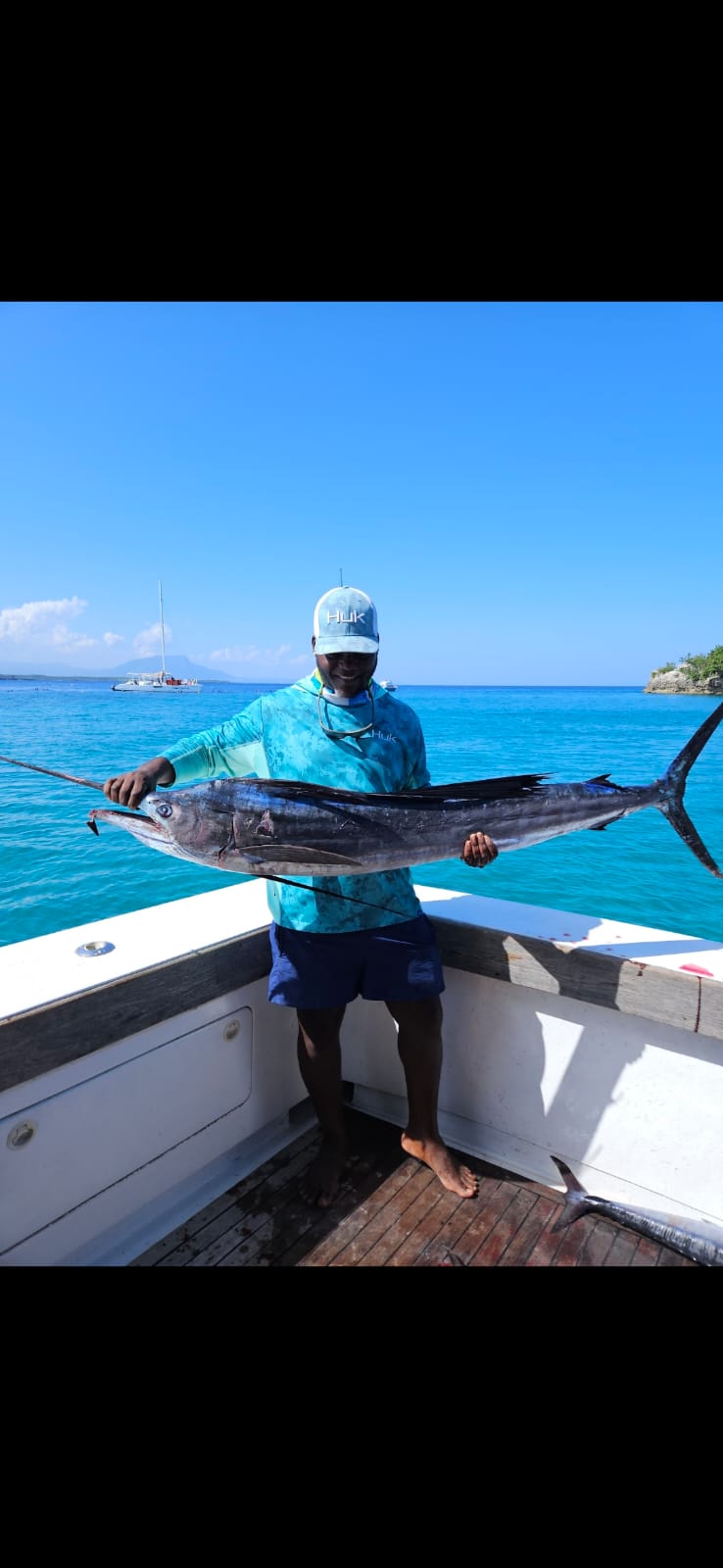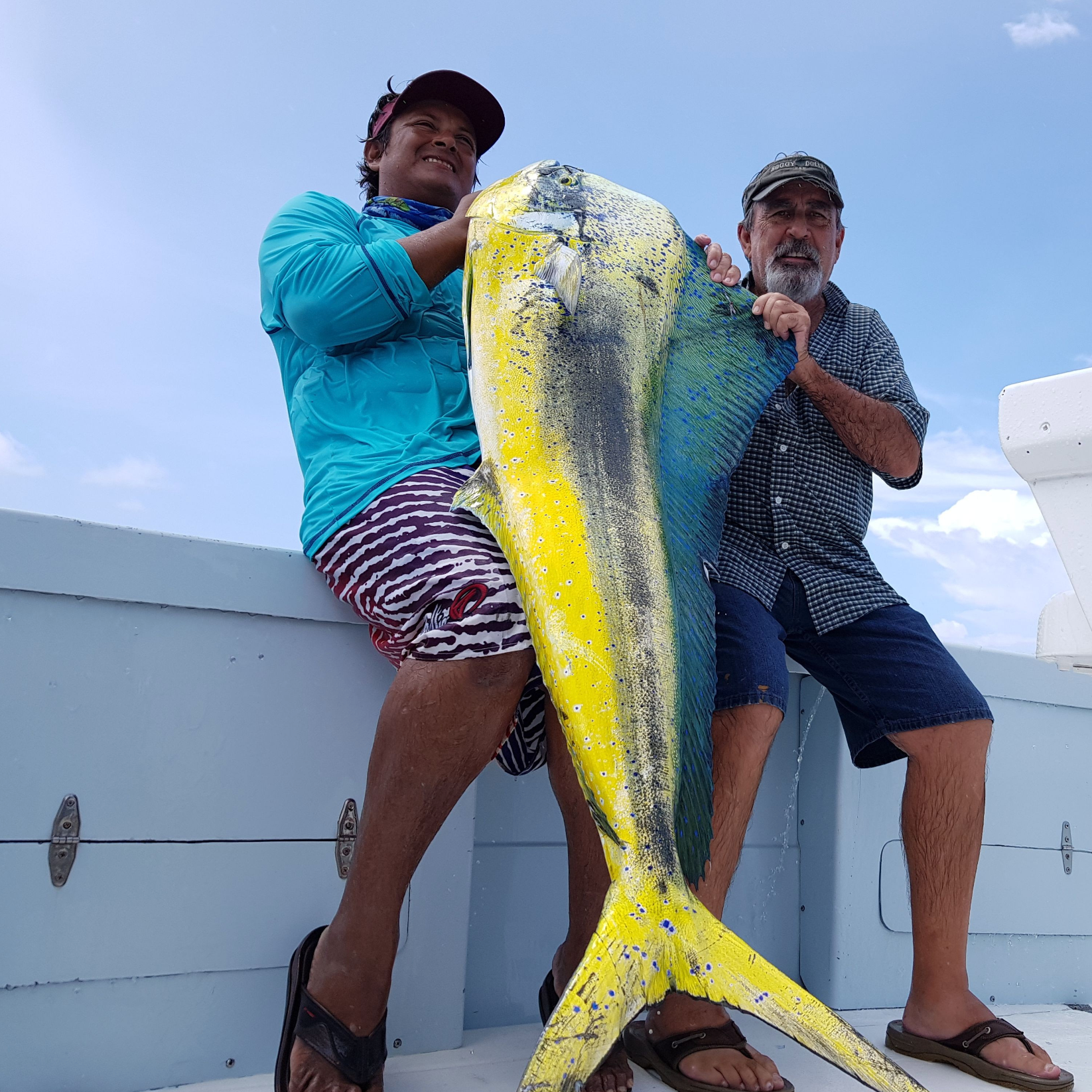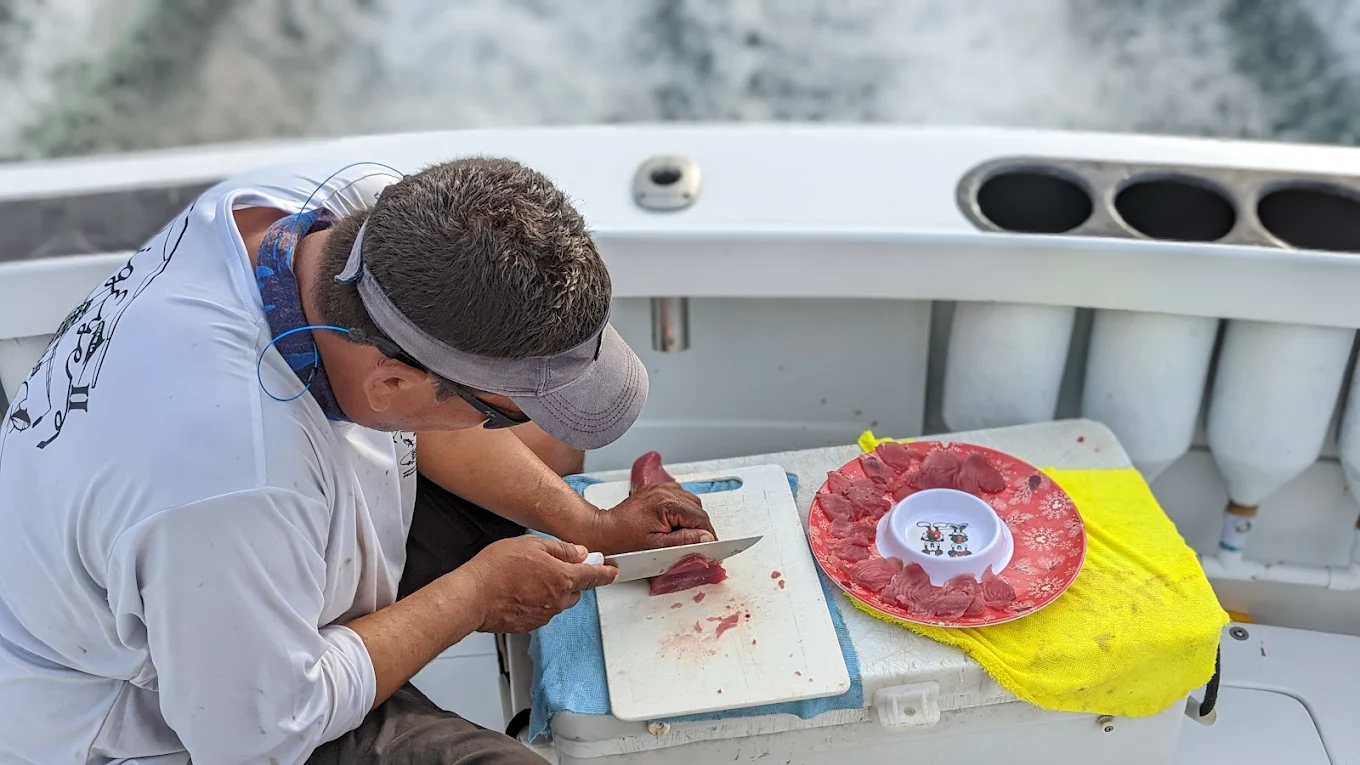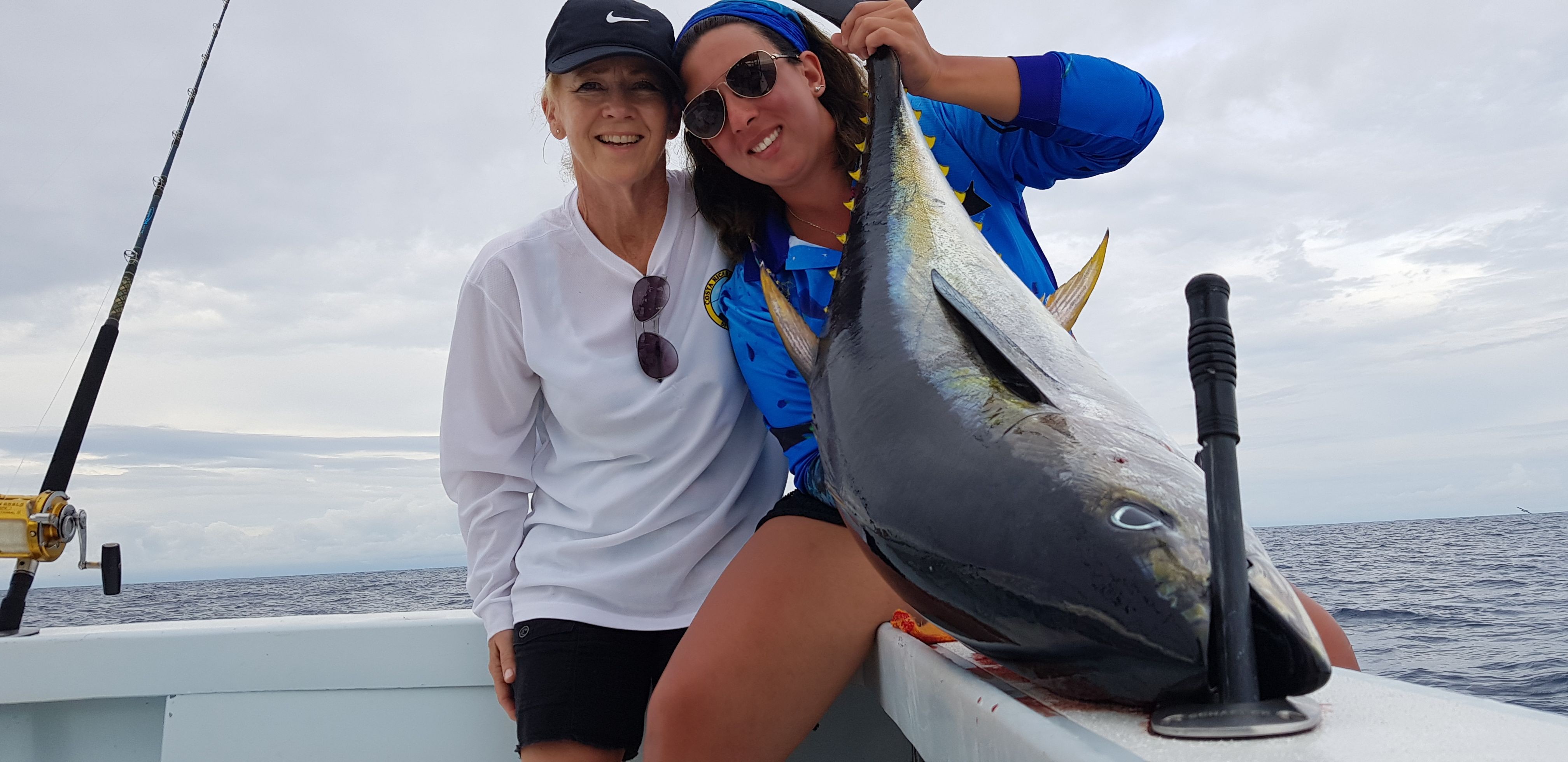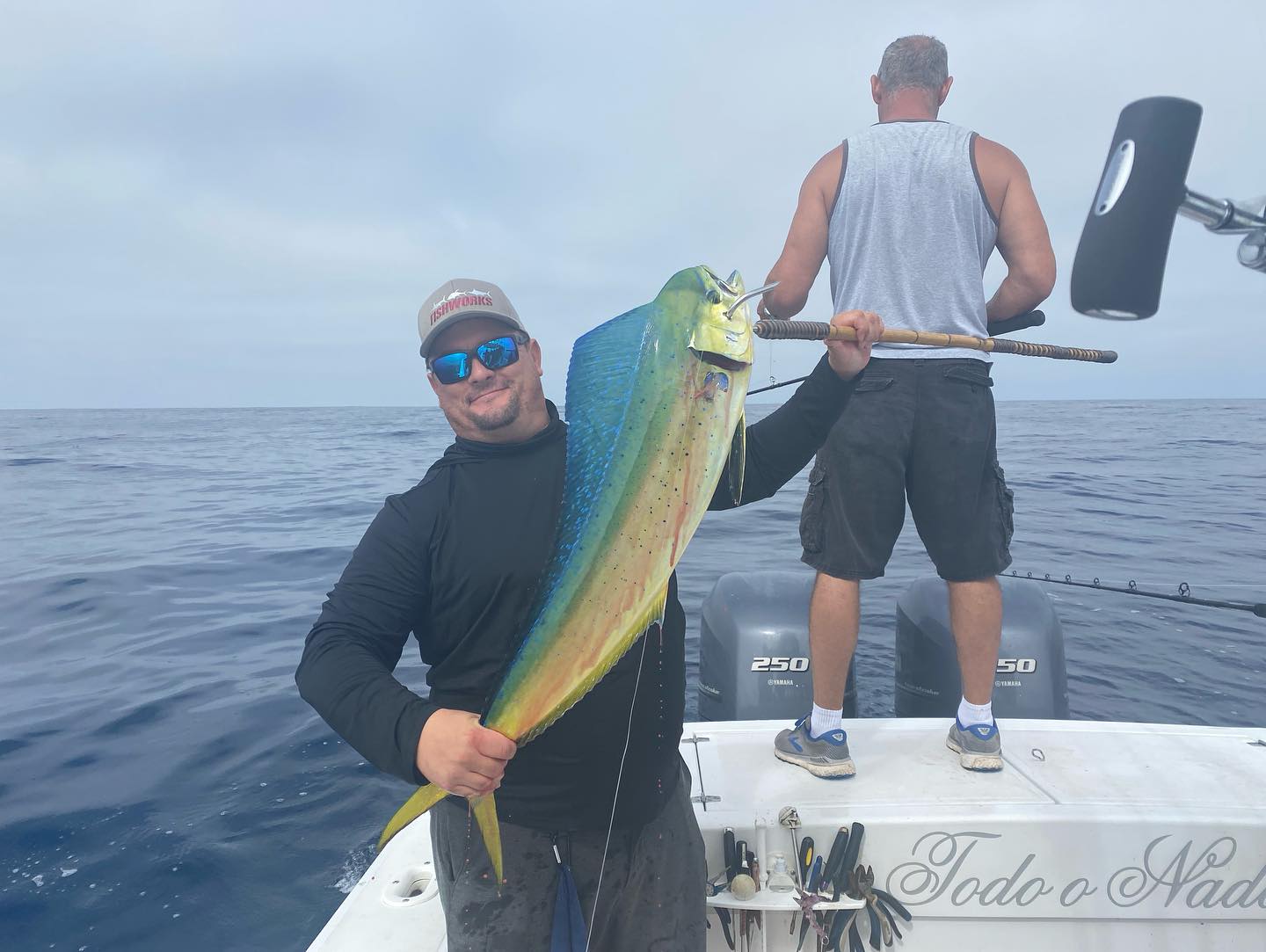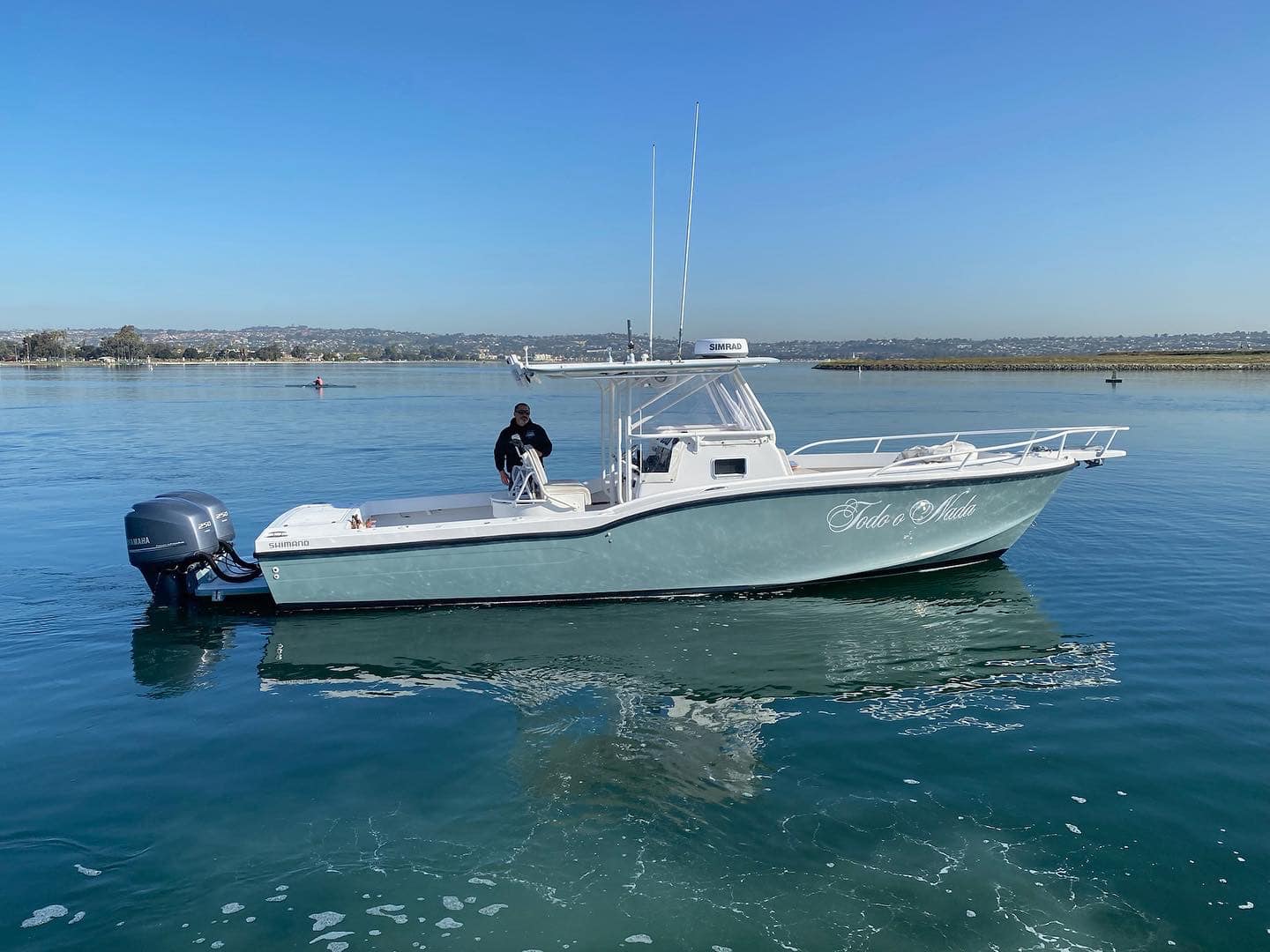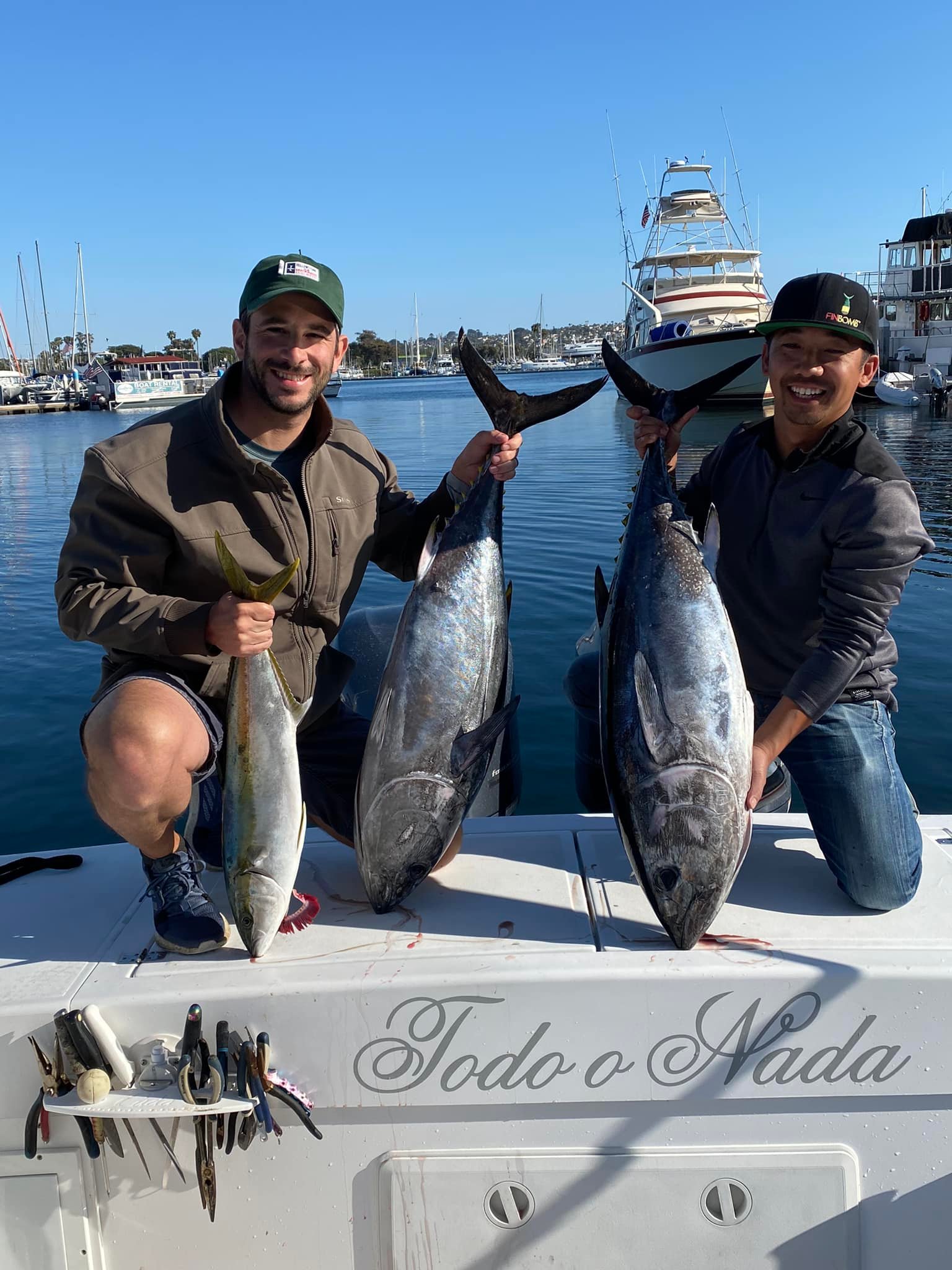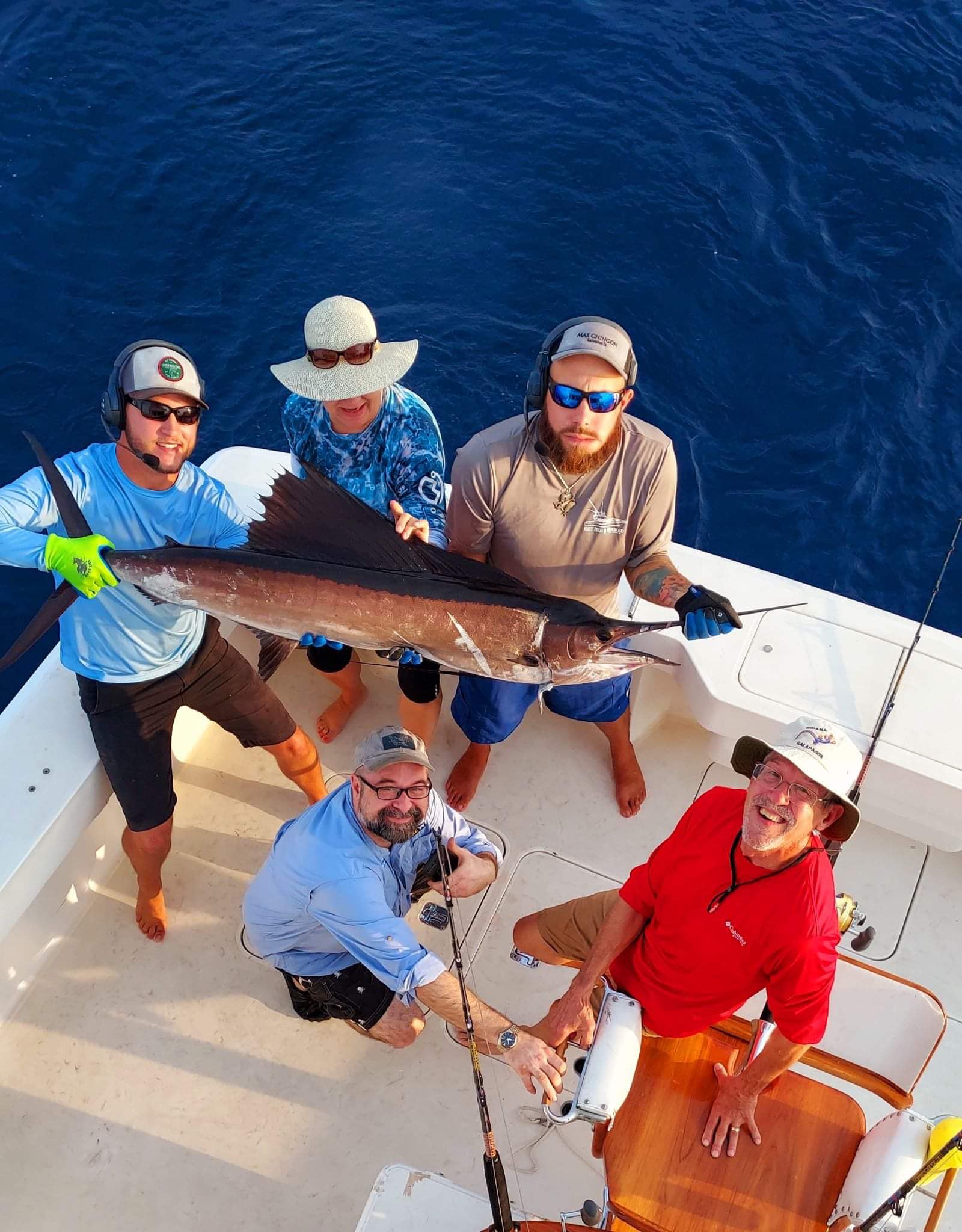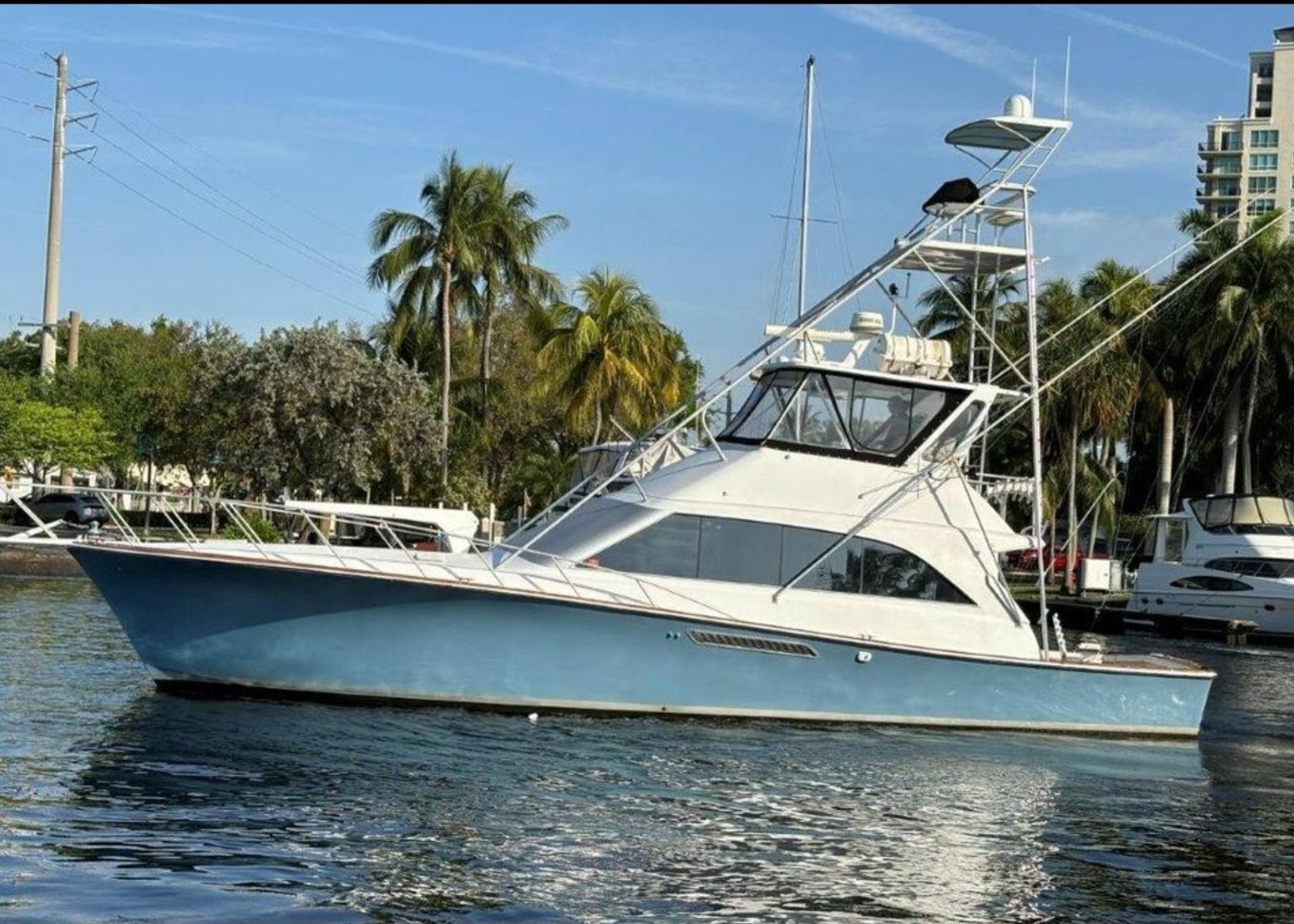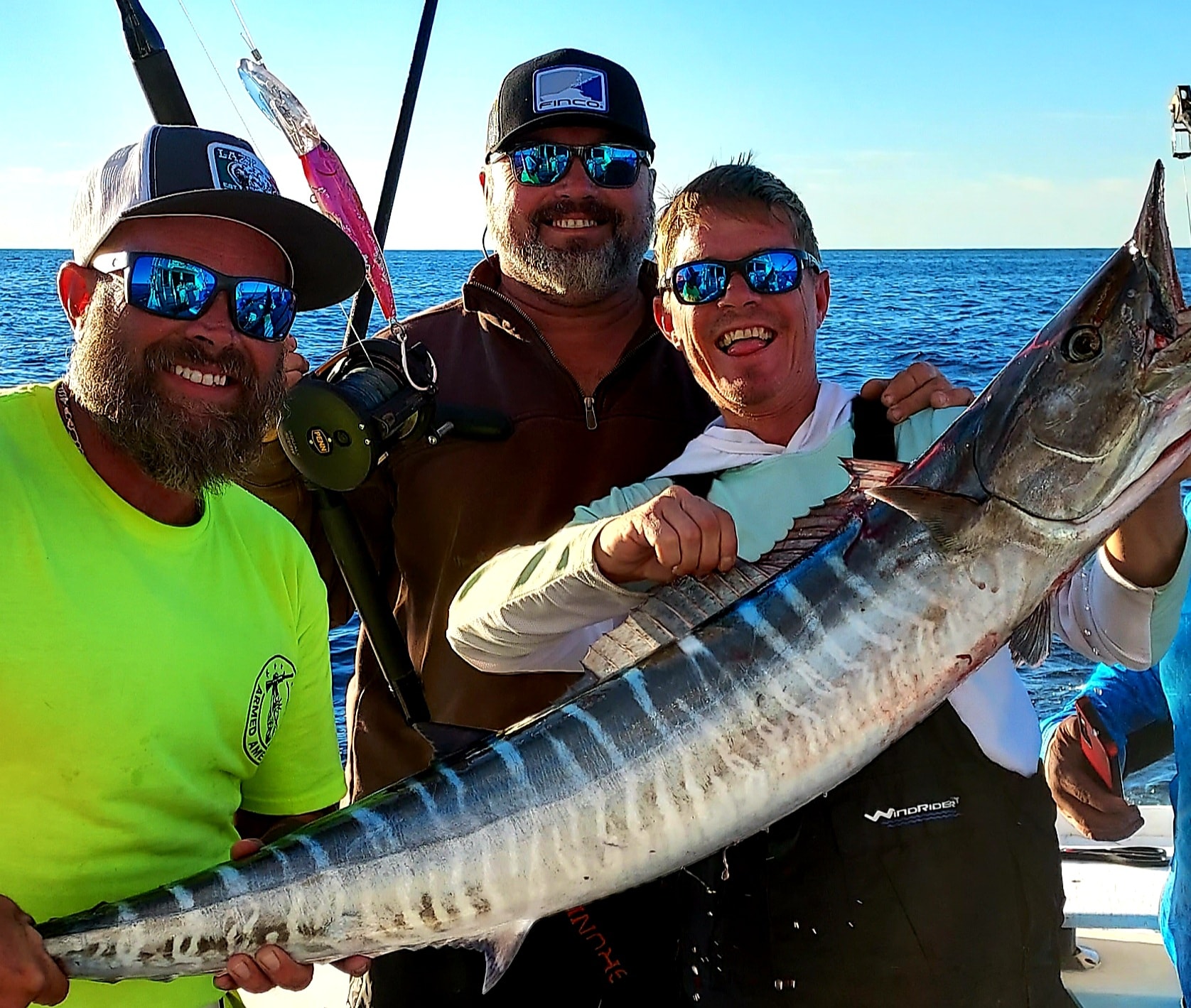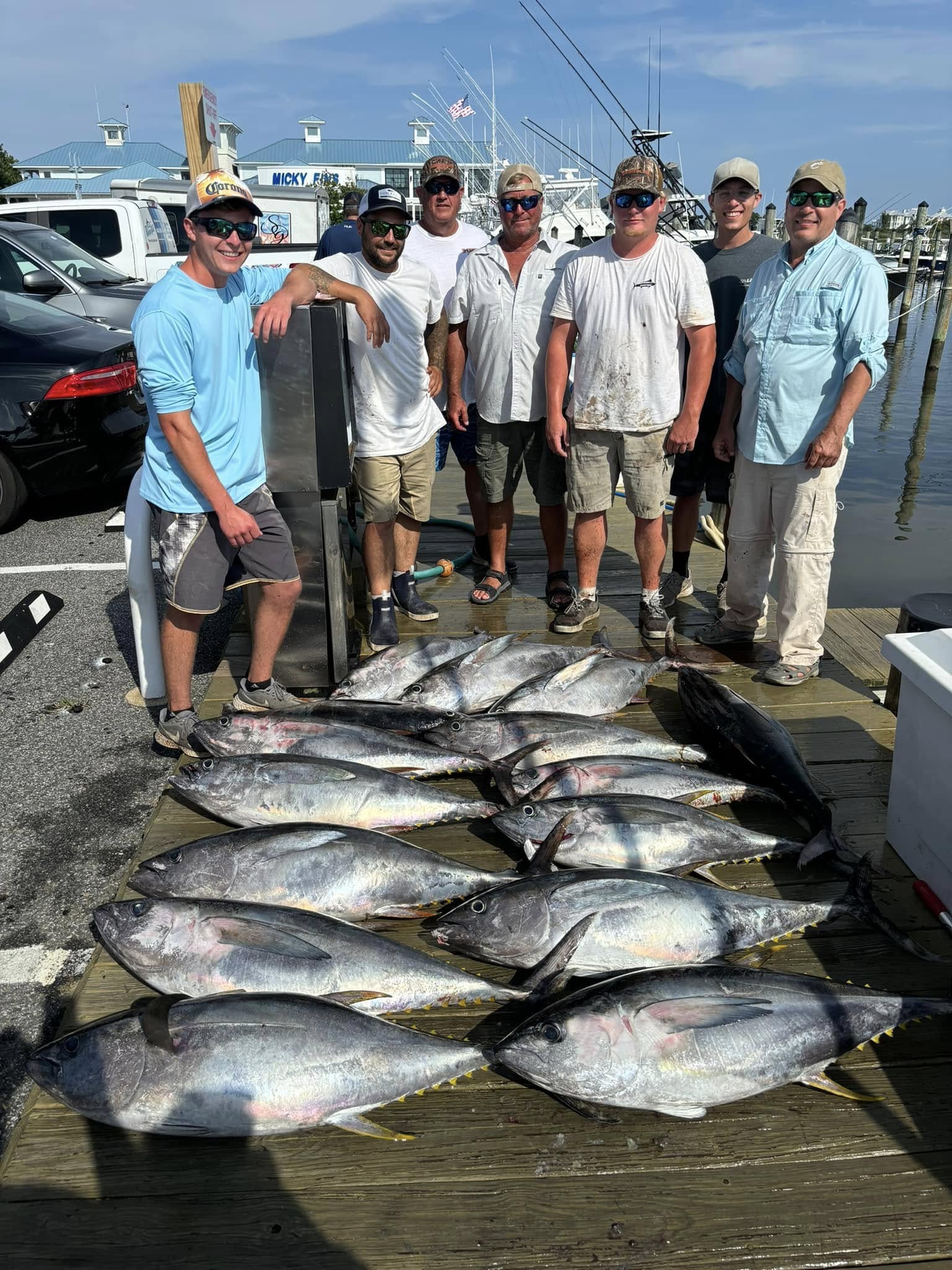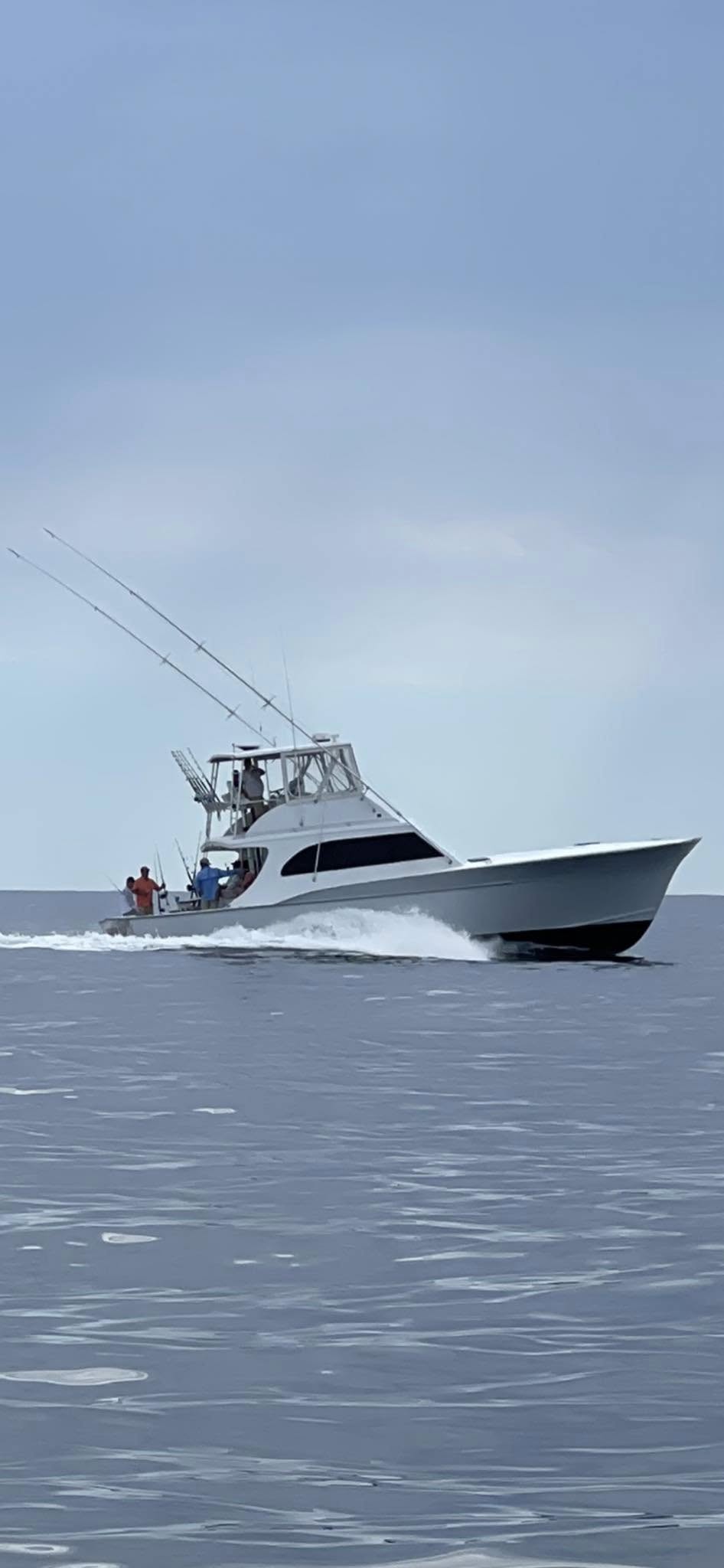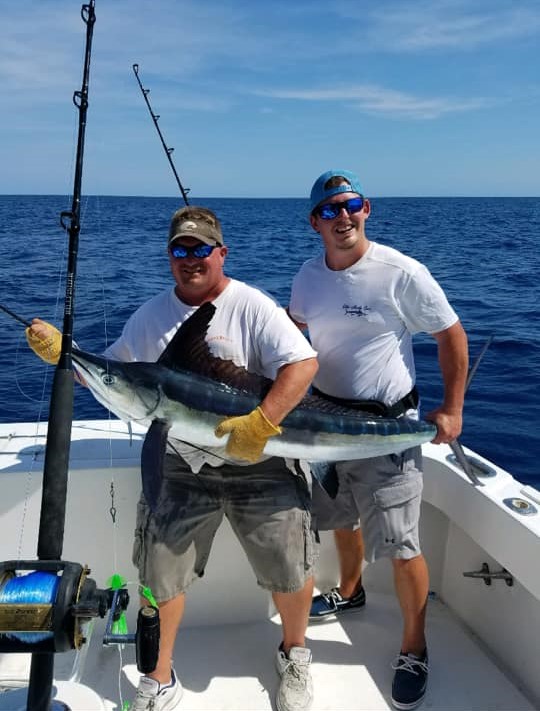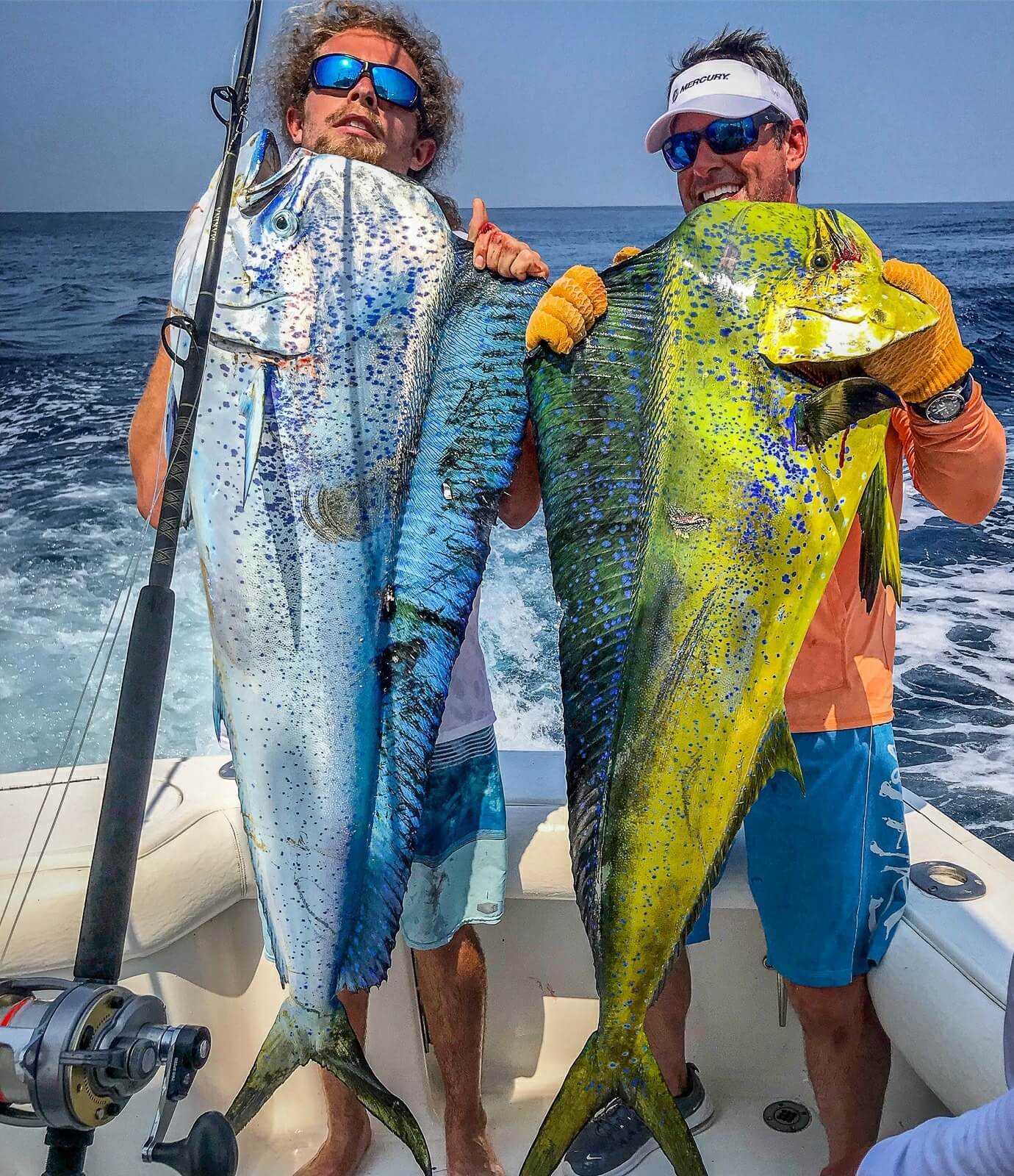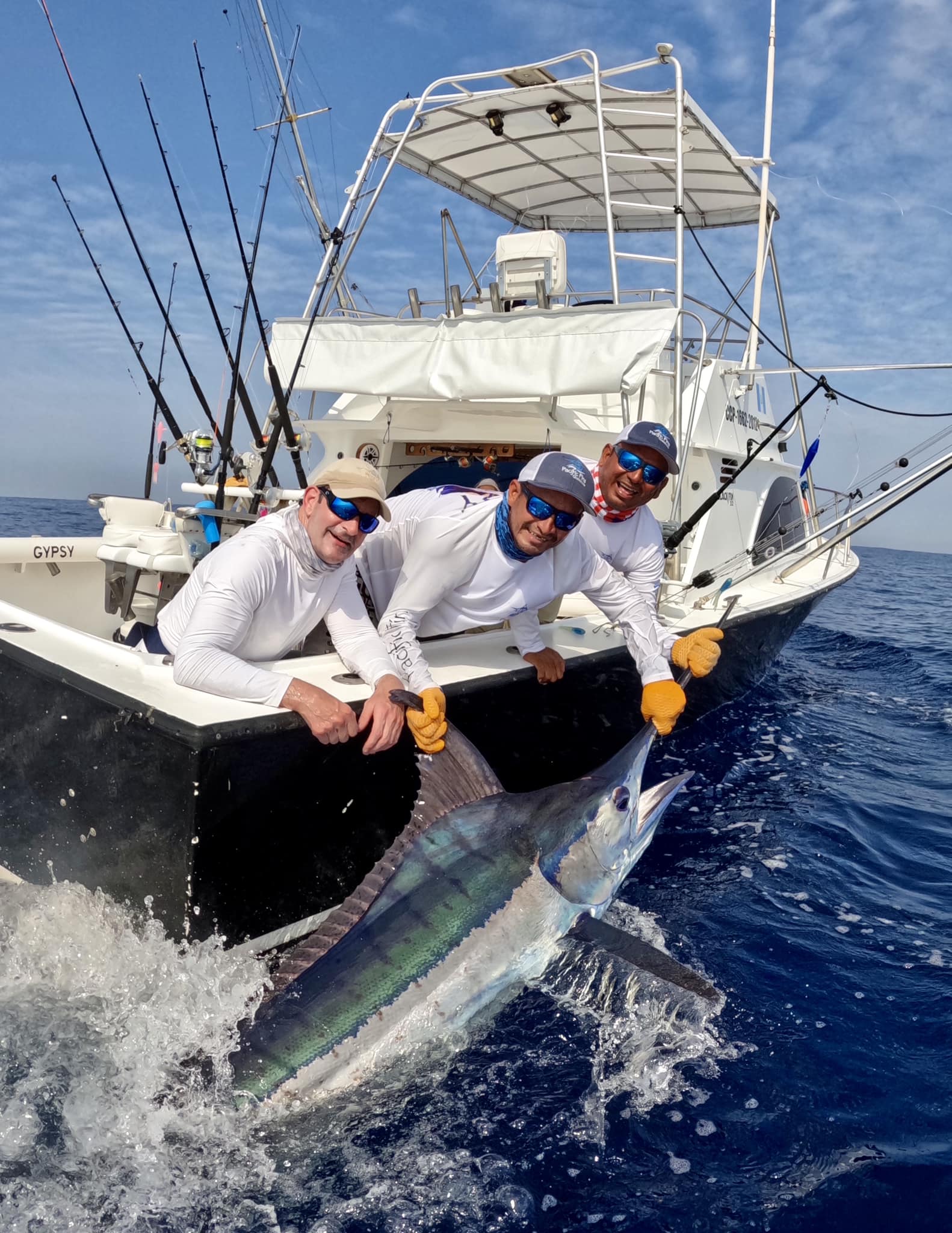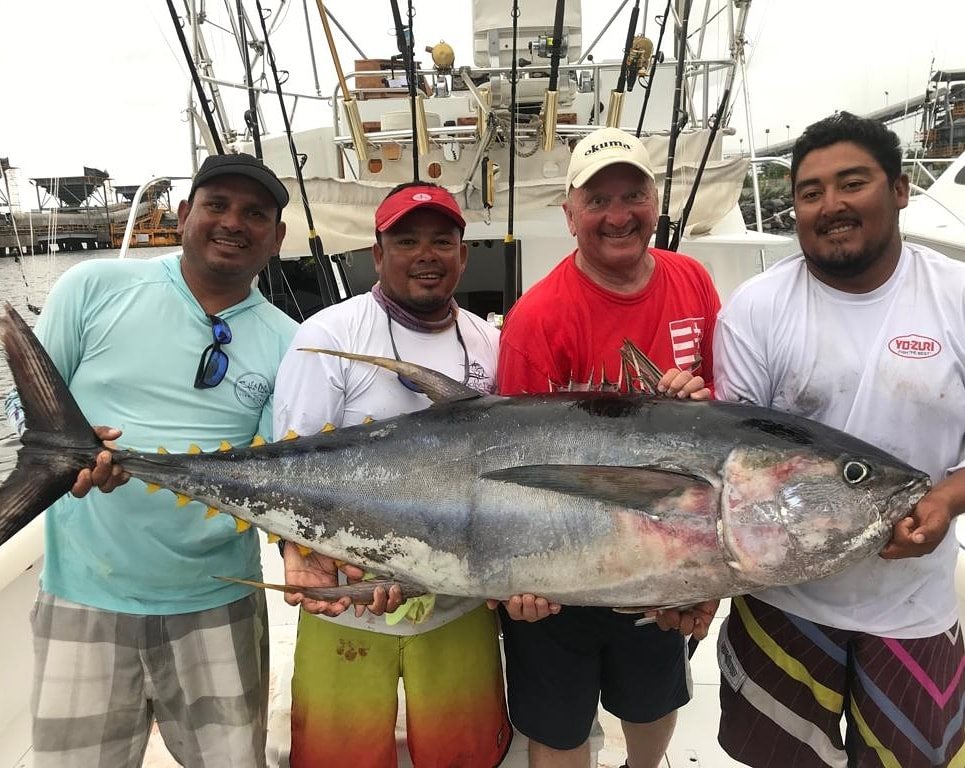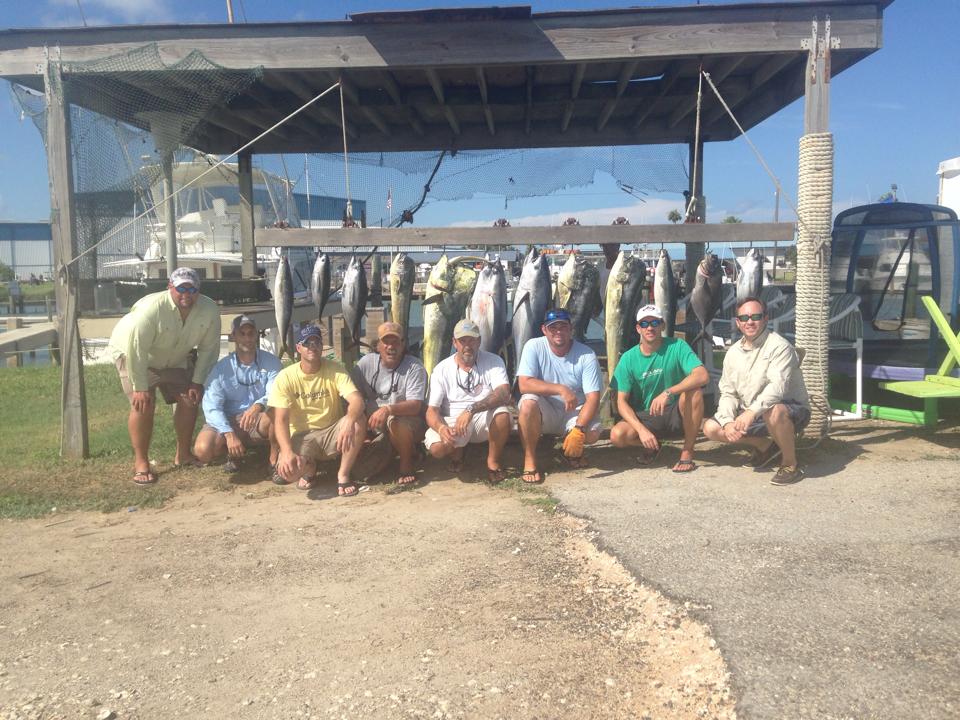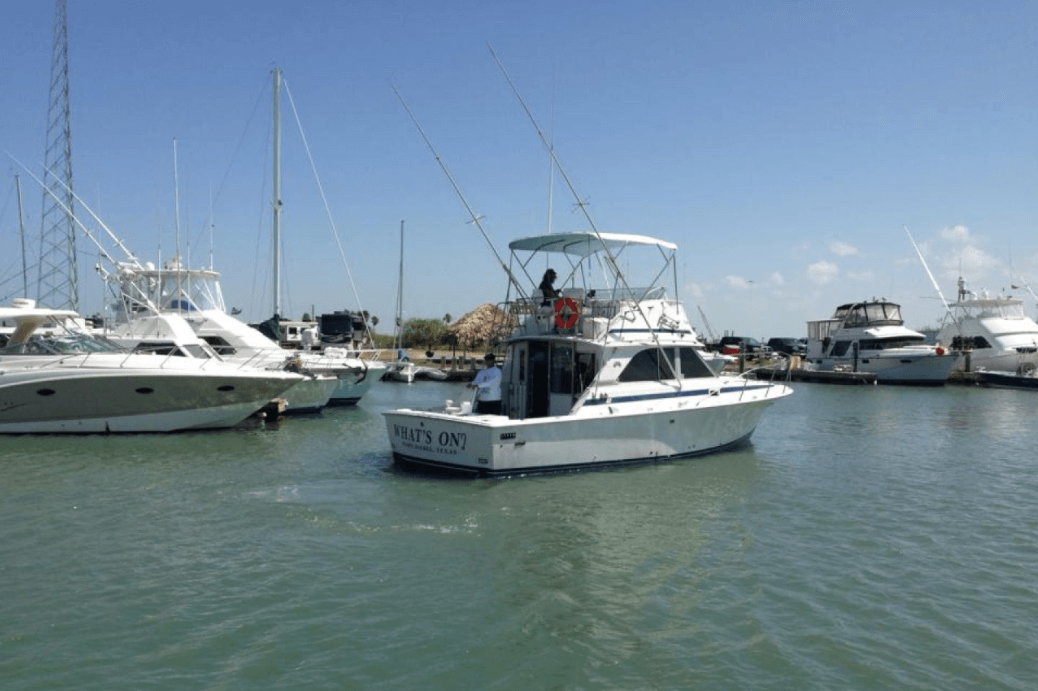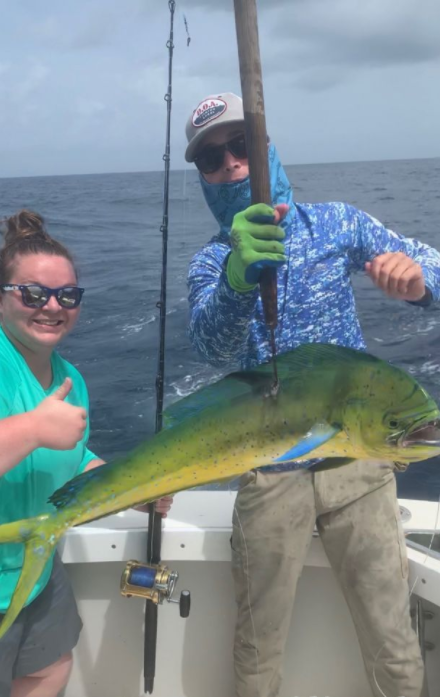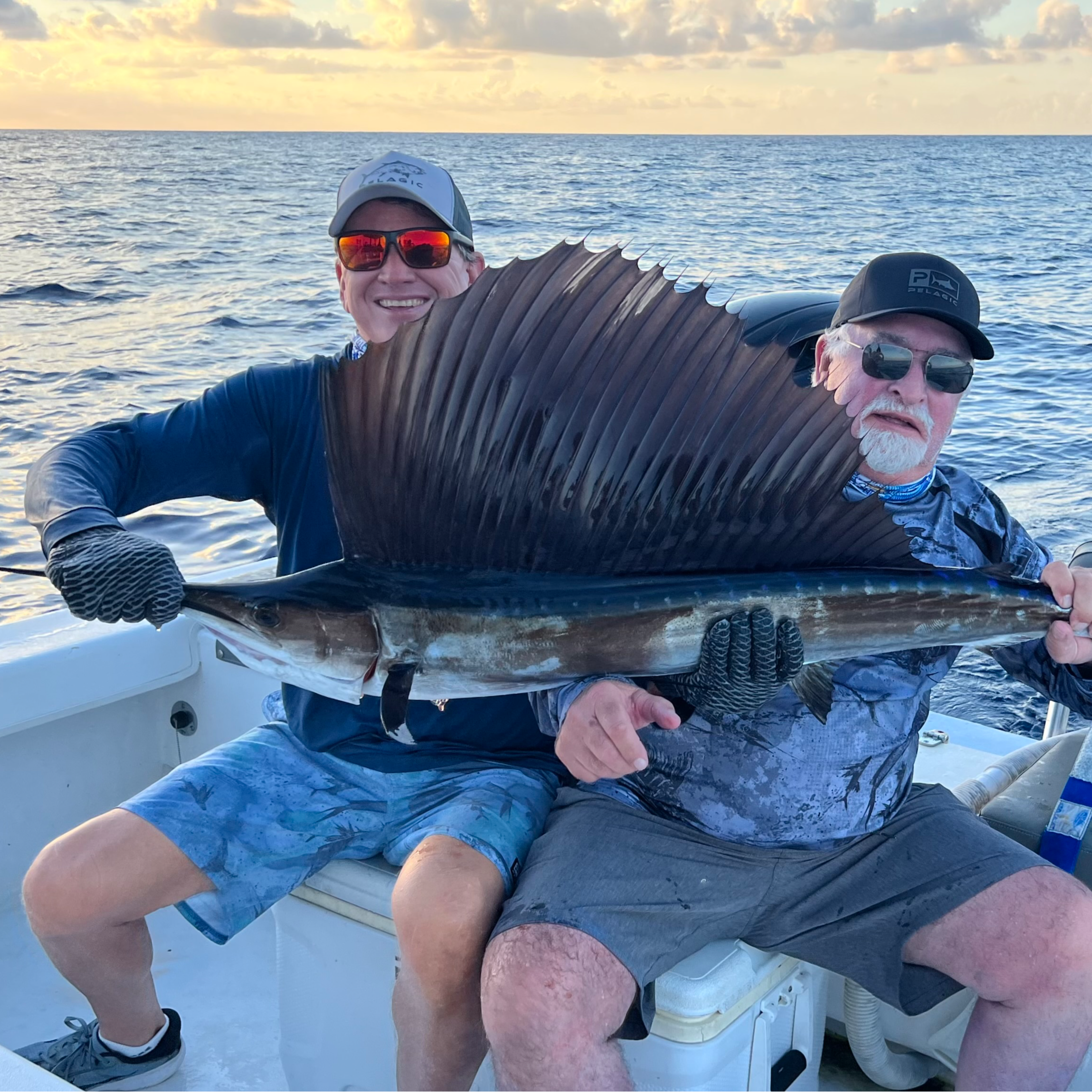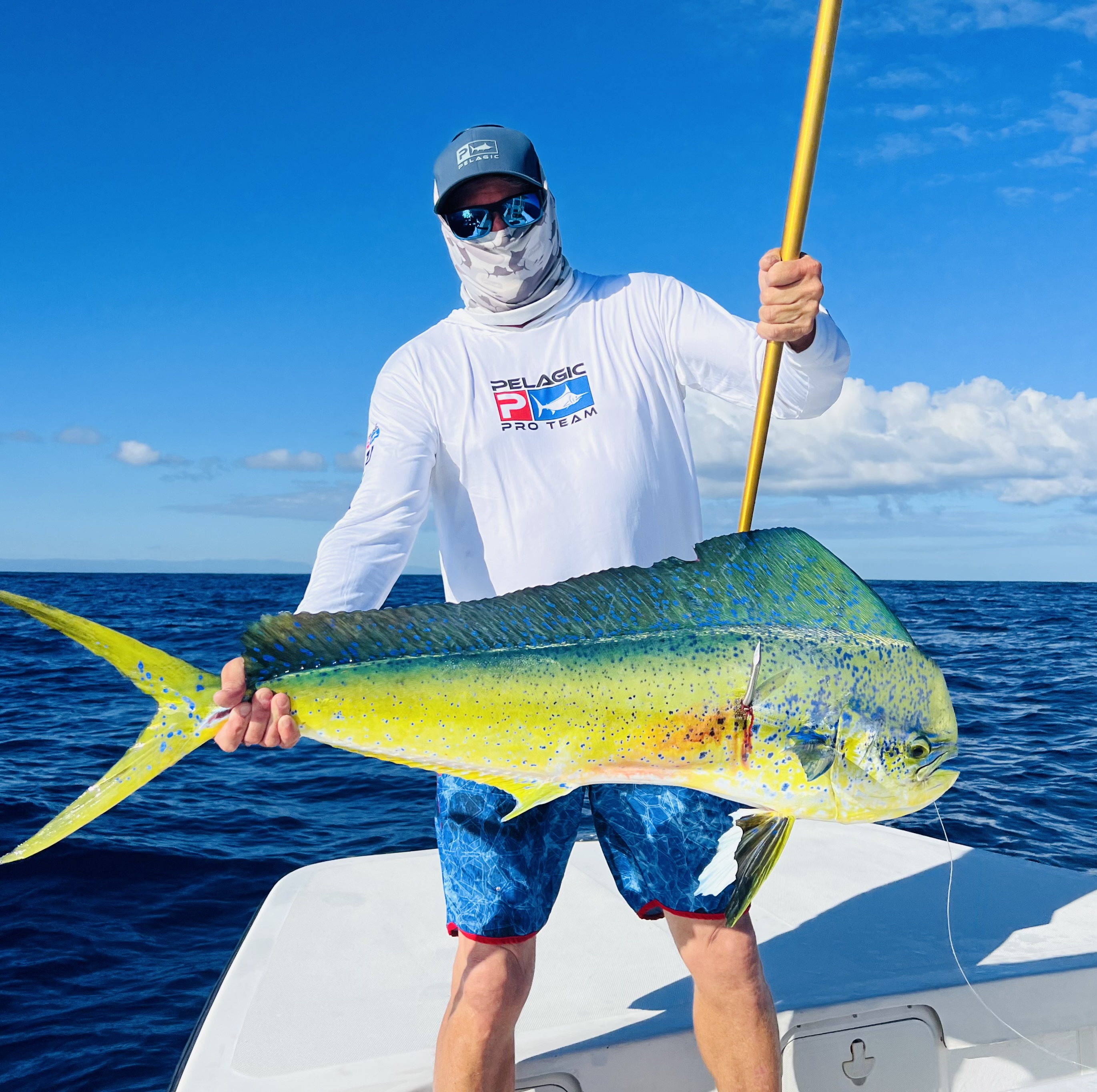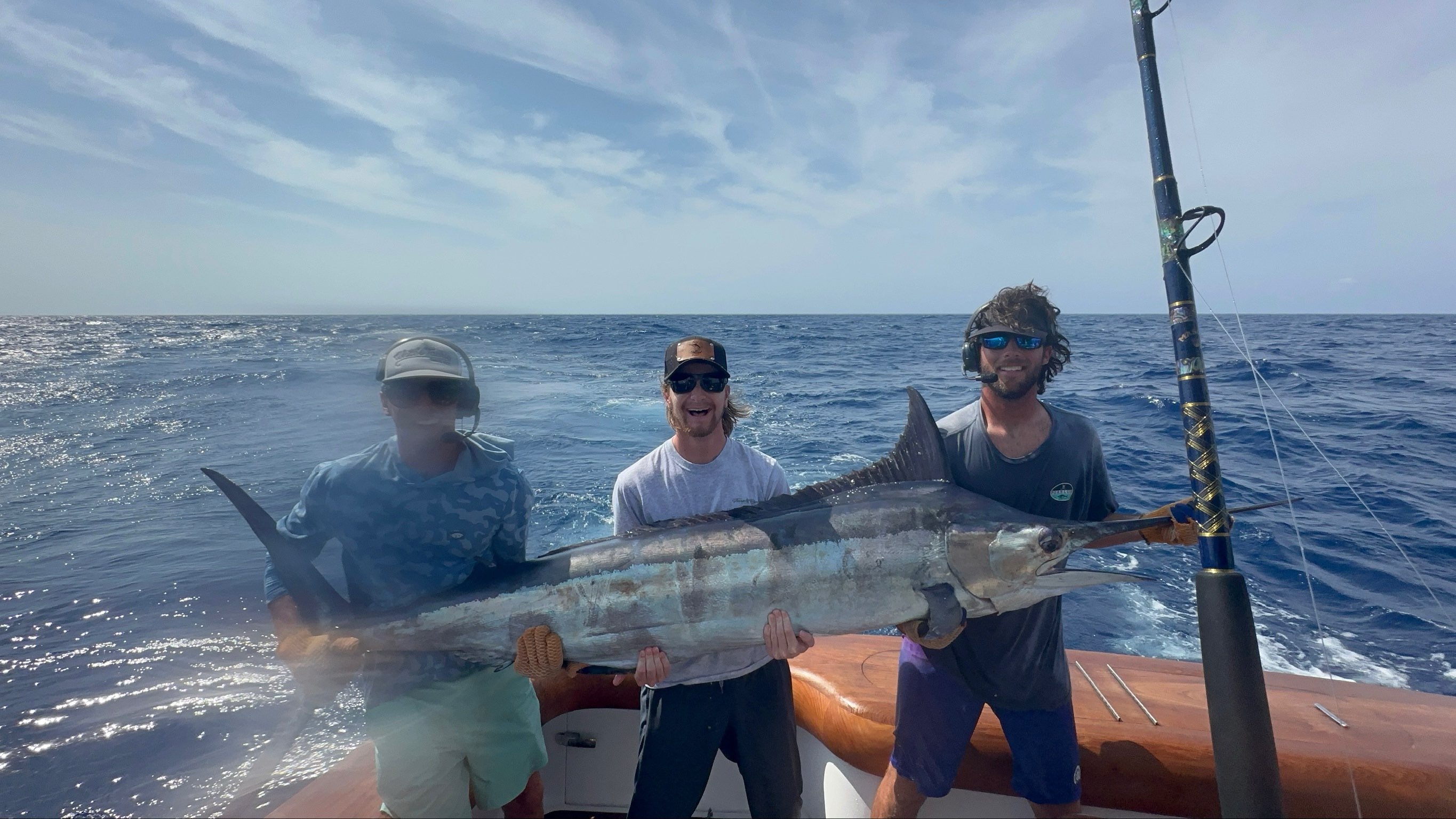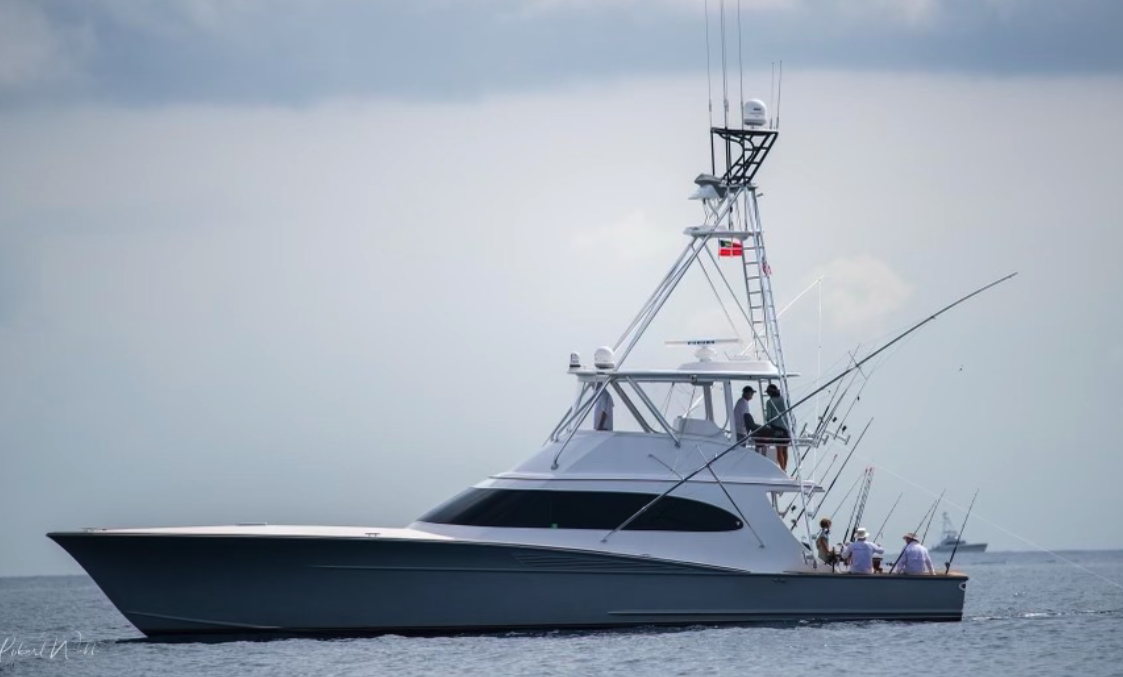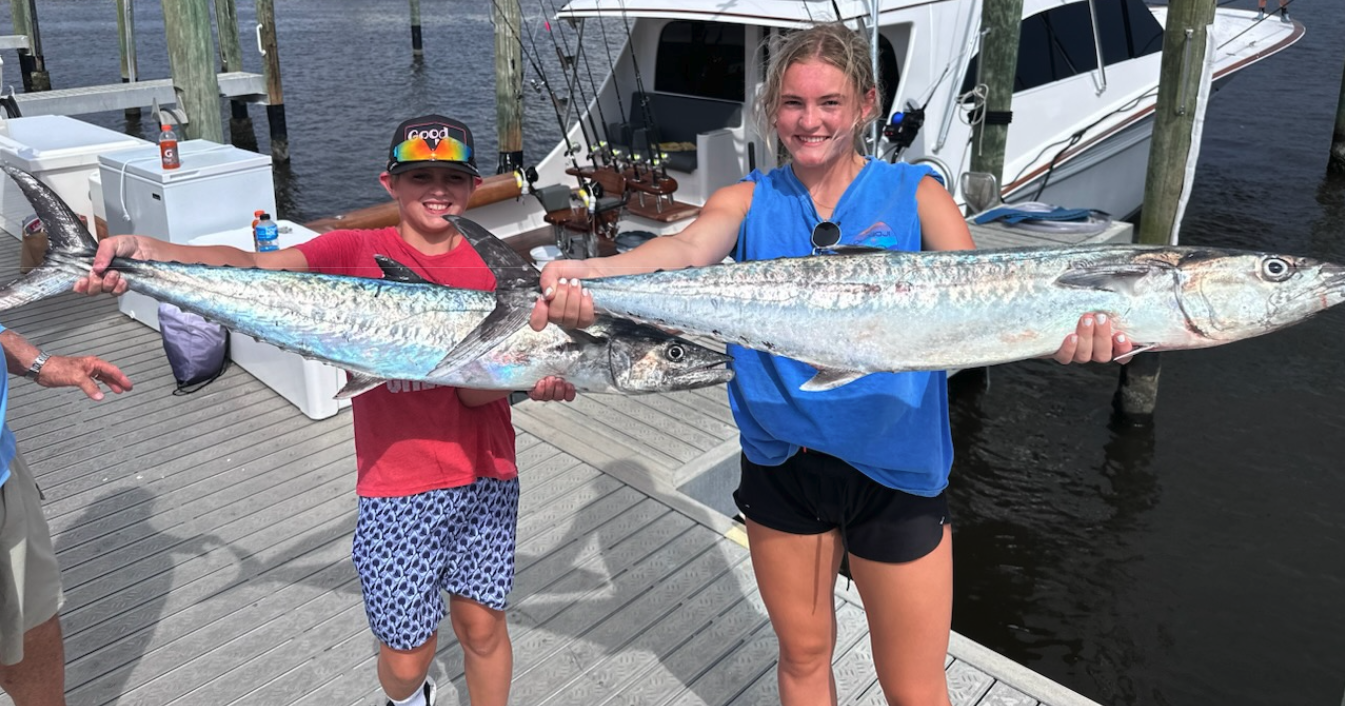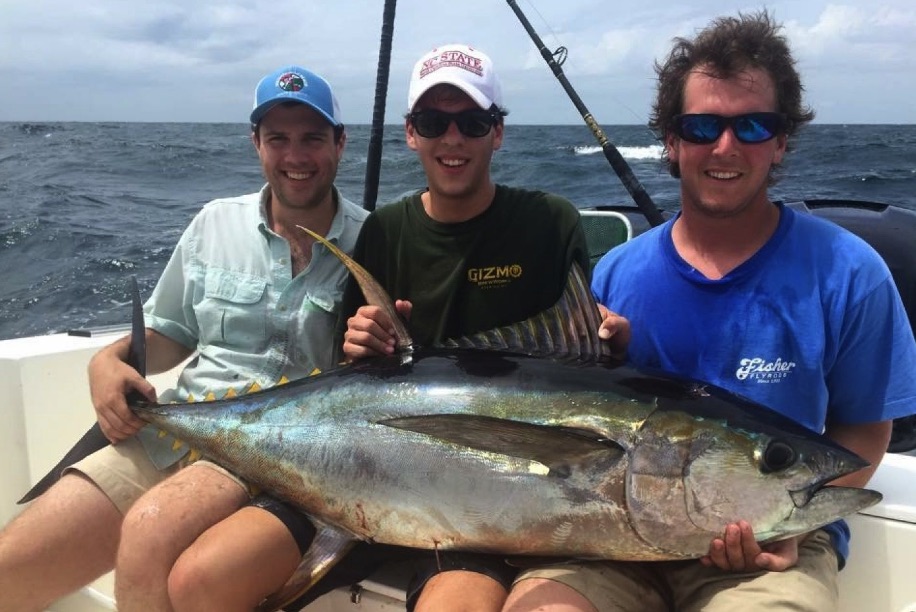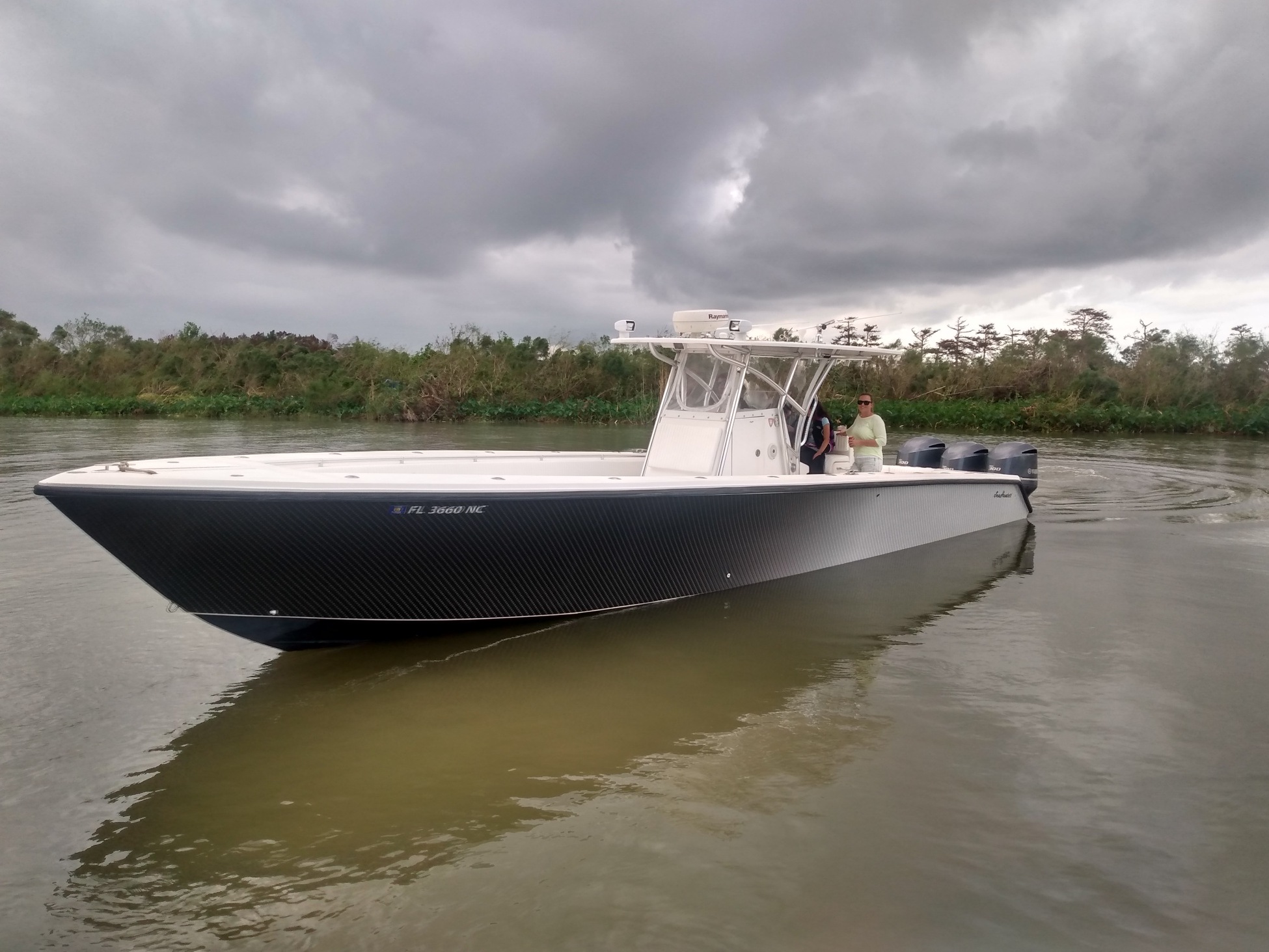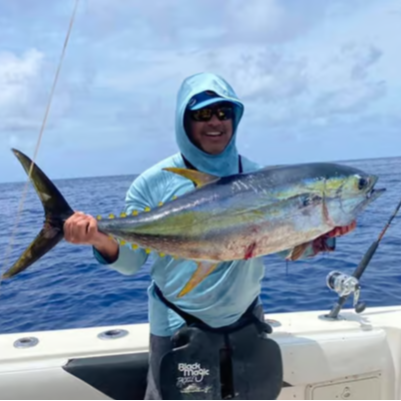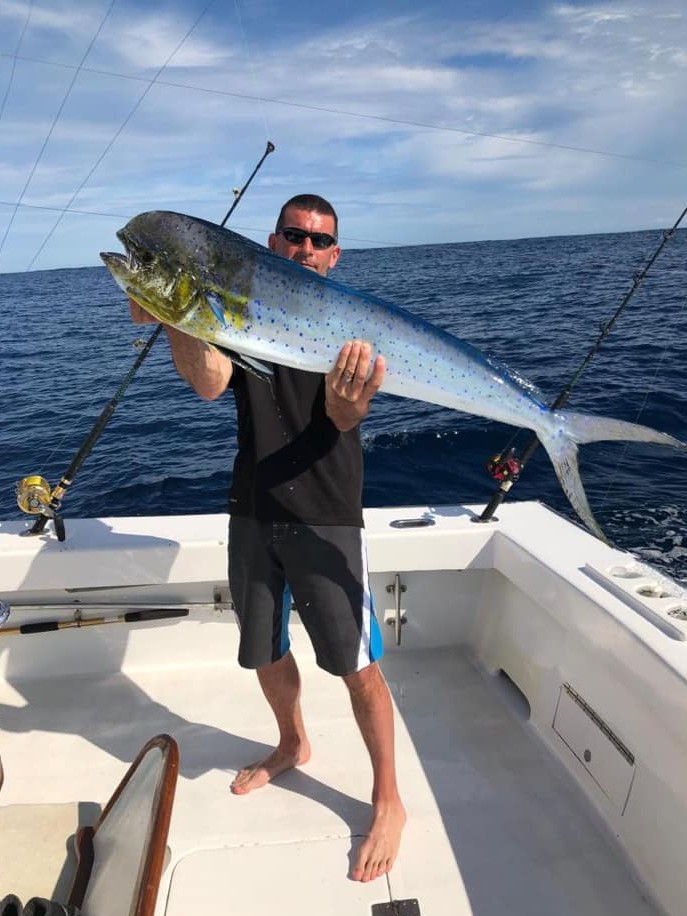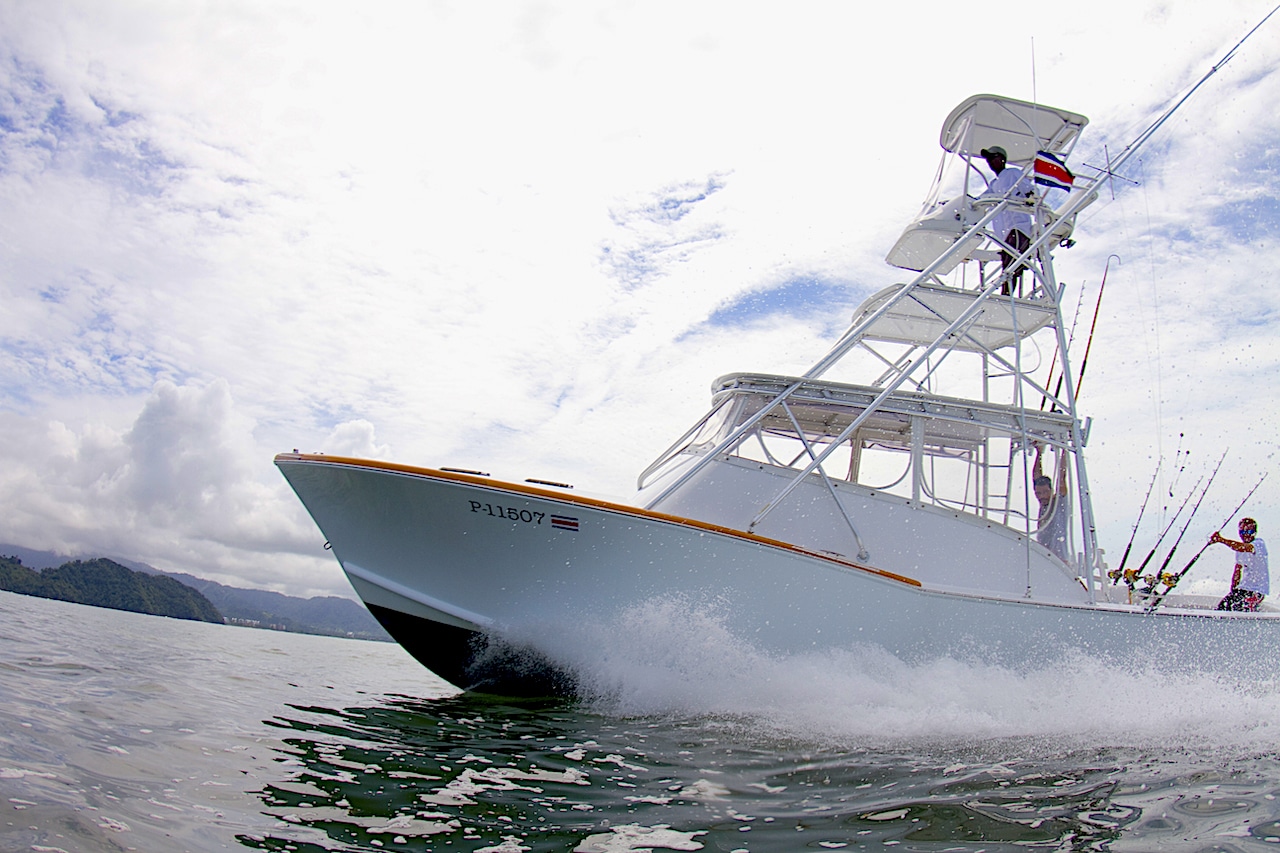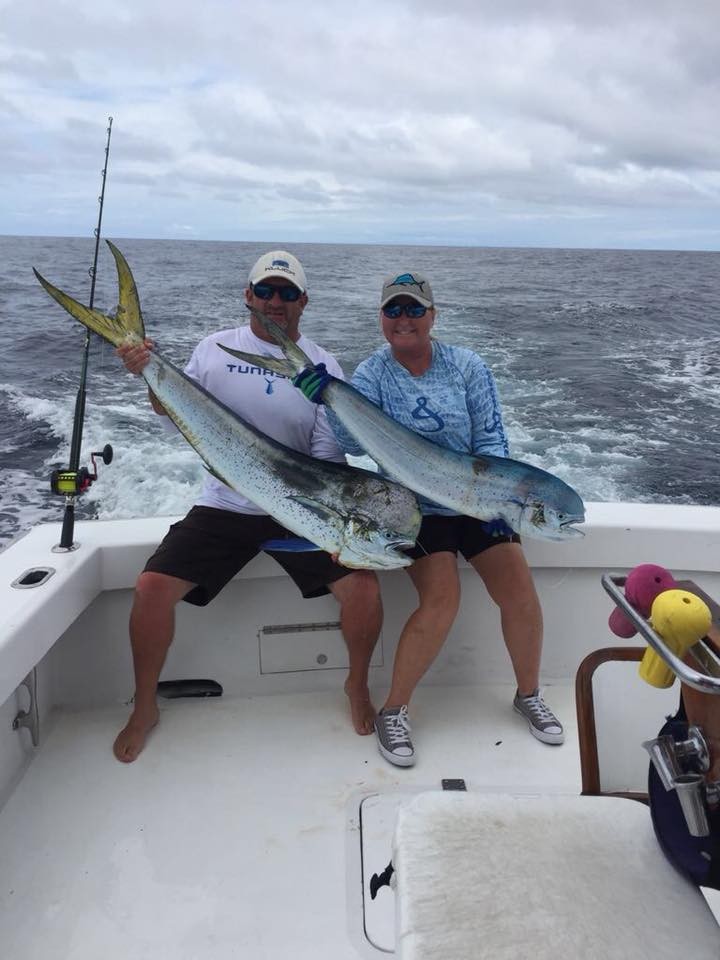Damn Good Guides
Experts Available 24/7
100% Weather Guarantee
Top Cities for Yellowfin Tuna Fishing
“Our Damn Good Guides go above and beyond, and we’ve handpicked every single one. We’re passionate about the outdoors and look forward to getting you out on the trip of a lifetime, every time.”
Jonathan and Attison | Co-founders | Austin, Texas
Yellowfin Tuna Fishing Charters
Billfish, Wahoo, Mahi & Tuna
Coronado Islands Fishing Trip
4 Hour Hawaiian Sportfishing
Deep Sea, Nearshore, Snorkeling in Kaiminani
Kaiminani, HI Offshore Fishing
Deep Sea, Nearshore Fishing in Ocean City
Ocean City Nearshore/Offshore
Deep Sea, Nearshore Fishing in Shelter Island
Overnight Canyon Tuna
Everything to Know About Booking a yellowfin tuna fishing charter
What are the best yellowfin tuna fishing charters?
The best yellowfin tuna fishing charters are:
What is a yellowfin tuna?
Yellowfin tuna (thunnus albacares) is found worldwide in tropical and subtropical waters, and is common throughout the Atlantic, Pacific, and Indian Oceans. It is a pelagic fish, and is among the larger of the many types of tuna. It is smaller than a bluefin and bigeye yet generally larger than a blackfin, skipjack, or albacore.
Yellowfin are distinguished from other tuna mainly by the crazy shape of their second dorsal and anal fins, which are bright yellow and extend out far from their bodies as long curved skinny fins. In mature fish these can extend quite a ways and reach back almost to the tail.
How big do yellowfin tuna get?
Yellowfin tuna will commonly reach maturity at around 2 years and 40 inches, and will weigh under 100 pounds. The fish live a relatively short lifespan of 5-10 years, but can reach upwards of 300 pounds in that span. They are certainly a much better prize than the blackfin they are often caught with.
Whats the biggest yellowfin tuna ever caught?
While yellowfin can purportedly get up to 94 inches and 440 pounds, the IGFA record currently stands at 388 pounds for a fish that was caught in 1977 off the Pacific coast of Mexico. There are a few challengers that have not been IGFA certified though, including a 405 pounder and a 425 pounder. Additionally, a massive 480 pounder was caught by spear in 2018 off the coast of the Dominican Republic. While this is not rod and reel fishing, it is certainly awesome to see such a beautiful fish and impressive to see the true potential of the size of a yellowfin.
Where is the best place to catch yellowfin tuna?
The biggest yellowfin tuna are known to be hanging around the Pacific side of Mexico, especially off the Baja Peninsula or Catalina Island. These are often targeted from San Diego in longer-range boats. Other common destinations include Puerto Vallarta, Hannibal Bank, Panama, Hawaii (where they are called Ahi), the Outer Banks of North Carolina, and Venice, LA (known for having very little travel time between marina and tuna).
Yellowfin are epipelagic, meaning they live in the open ocean, but are close to the surface where plenty of sunlight feeds plenty of plankton and life. They are usually in the top 300 ft of water.
When should I catch yellowfin tuna?
Yellowfin tuna will come closer to the shore when the water temperature is higher, so the best fishing is usually in warmer months. Because you need to head far offshore to catch them, you will also be relying on a good weather window and calm seas.
The season for yellowfin tuna in the US is always open, with the Carolinas, Alabama, Louisiana, and Mississippi having a 27'' curved FL minimum (other states have no size regulations). The Carolinas and Mississippi have a 3 fish bag limit while California has a 20 finfish bag limit, with no more than 10 fish of a single species allowed (including yellowfin tuna). Other states have no yellowfin bag regulations.
How do you catch yellowfin tuna?
Yellowfin will be caught by either trolling baits and lures, sight casting, or jigging. You can chum them up to the surface (they usually aren't too far below). They are often schooled up, so when you're on them, stay put. They also tend to like some structure, and in the Gulf of Mexico tend to be found around offshore oil rigs.
Yellowfin have great eyesight so it is recommended to have fluorocarbon leaders to reduce visibility. In terms of lure, artificials are popular and you can use tuna feathers, rapala plugs, or metal jigs. If they're on the surface, you can use flies or poppers to good effect.
Once you get one on, it's a unique fight. Rather than wearing themselves out quickly, yellowfin (and all tuna) are notorious for their deep dive and circular motion - they'll swim downward in broad circles and pull on the line all the way up. They are a powerful fish and their size combined with their strategy for staying alive makes for a tough fight.
Are yellowfin tuna good to eat? What are the best yellowfin tuna recipes?
Yellowfin is a delicacy both raw or cooked. While not as popular as its relative the bluefin, yellowfin is fast becoming a sashimi treat. Eat the fish raw right after you catch, and cook into thick steaks after that.
Recent Reviews
Cities
- Aransas Pass, TX
- Atlantic Beach, NC
- Atlantic City, NJ
- Beaufort, NC
- Boca Chica, Panama
- Brick Township, NJ
- Cabo San Lucas, Mexico
- Caguas, Puerto Rico
- Cancún, Mexico
- Cape May, NJ
- Carolina, Puerto Rico
- Carolina Beach, NC
- Chauvin, LA
- Coco, Costa Rica
- Corral del Risco, Mexico
- Culebra, Costa Rica
- Dana Point, CA
- Dania Beach, FL
- Dauphin Island, AL
- Delray Beach, FL
- Destin, FL
- Edisto Island, SC
- El Combate, Puerto Rico
- Eleele, HI
- Falmouth, MA
- Fort Lauderdale, FL
- Fort Pierce, FL
- Fort Walton Beach, FL
- Freeport, TX
- Galveston, TX
- Gautier, MS
- Golden Meadow, LA
- Gulf Breeze, FL
- Gulf Shores, AL
- Gustavia, Saint Barthélemy
- Haleiwa, HI
- Hampton Bays, NY
- Hatteras, NC
- Hitchcock, TX
- Honolulu, HI
- Iztapa, Guatemala
- Jaco, Costa Rica
- Johns Island, SC
- Jolly Harbour, Antigua, Antigua and Barbuda
- Kailua-Kona, HI
- Kaiminani, HI
- Kapaʻa, HI
- Key West, FL
- La Cruz de Huanacaxtle, Mexico
- La Paz, Mexico
- Lahaina, HI
- Liberia, Costa Rica
- Lihue, HI
- Lo de Marcos, Mexico
- Long Beach, CA
- Longport, NJ
- Loreto, Mexico
- Los Angeles, CA
- Los Pargos, Costa Rica
- Malena, Panama
- Manteo, NC
- Marathon, FL
- Marina del Rey, CA
- Mastic, NY
- Mazatlán, Mexico
- McQueen's Settlement, The Bahamas
- Miami Beach, FL
- Montauk, NY
- Moorea-Maiao, French Polynesia
- Morehead City, NC
- Nacascolo, Costa Rica
- Naples, FL
- Narragansett, RI
- Nassau, The Bahamas
- Naval Air Station Key West, FL
- Neptune City, NJ
- Newport, NC
- Norfolk, VA
- Nuevo Nayarit, Mexico
- Nungwi, Tanzania
- Ocean City, MD
- Ocean Springs, MS
- Ocean Township, NJ
- Orange Beach, AL
- Orleans, MA
- Palmas del Mar, Puerto Rico
- Panama City, FL
- Panama City, Panama
- Pensacola, FL
- Pixvae, Panama
- Playa Flamingo, Costa Rica
- Playa Herradura, Costa Rica
- Point Pleasant Beach, NJ
- Pompano Beach, FL
- Port Aransas, TX
- Port Mansfield, TX
- Puerto Escondido, Oax., Mexico
- Puerto Quetzal, Guatemala
- Puerto Vallarta, Mexico
- Punta Cana, Dominican Republic
- Punta Mita, Mexico
- Quepos, Costa Rica
- Rincon, Puerto Rico
- Rio Hato, Panama
- Riviera Beach, FL
- Roosevelt Roads, Puerto Rico
- San Diego, CA
- San José del Cabo, Mexico
- San Juan, Puerto Rico
- Sandy Bay, Honduras
- Sandys, Bermuda
- Santa Catalina, Panama
- Santa Rosa Beach, FL
- Sardinal, Costa Rica
- Shelter Island, NY
- Sosúa, Dominican Republic
- South Padre Island, TX
- Spanish Wells, The Bahamas
- Sri Vijaya Puram, India
- St. Augustine, FL
- Stuart, FL
- Tamarindo, Costa Rica
- Tulum, Mexico
- Venice, LA
- Virginia Beach, VA
- Wanchese, NC
- Wandoor, India
- West Babylon, NY
- Westport, MA
Other Fishing Species
- African Pompano
- Albacore Tuna
- Almaco Jack
- Amberjack
- Atlantic Mackerel
- Barracuda
- Bigeye Tuna
- Black Drum
- Black Grouper
- Black Marlin
- Black Seabass
- Blackfin Tuna
- Blacktip Shark
- Blue Marlin
- Blue Shark
- Bluefin Tuna
- Bluefish
- Bonefish
- Bonito
- Broomtail Grouper
- Bull Shark
- Calico Bass
- California Sheephead
- Cero Mackerel
- Cobia
- Cubera Snapper
- Dogtooth Tuna
- Dusky Shark
- False Albacore
- Florida Pompano
- Flounder
- Gag Grouper
- Giant Trevally
- Goliath Grouper
- Great White Shark
- Grunt
- Halibut
- Hammerhead Shark
- Hogfish
- Horse-eye Jack
- Jack Crevalle
- Kingfish
- Ladyfish
- Lane Snapper
- Lemon Shark
- Leopard Shark
- Lingcod
- Lobster
- Mahi Mahi
- Mako Shark
- Mangrove Snapper
- Milkfish
- Mullet Snapper
- Mutton Snapper
- Needlefish
- Permit
- Pink Snapper
- Queen Snapper
- Rainbow Runner
- Ray
- Red Grouper
- Red Snapper
- Rockfish
- Roosterfish
- Sailfish
- Sandbar Shark
- Scamp Grouper
- Sheepshead
- Skipjack Tuna
- Snook
- Snowy Grouper
- Spanish Mackerel
- Spearfish
- Strawberry Grouper
- Striped Bass
- Striped Marlin
- Swordfish
- Tarpon
- Thresher Shark
- Tiger Shark
- Tilefish
- Triggerfish
- Tripletail
- Vermillion Snapper
- Wahoo
- Warsaw Grouper
- White Marlin
- White Seabass
- Yellowtail Amberjack
- Yellowtail Snapper
Tour Species
Featured Cities
- Fishing Charters Near Me
- Austin Fishing Guides
- Biloxi Fishing Charters
- Bradenton Fishing Charters
- Cabo San Lucas Fishing Charters
- Cancun Fishing Charters
- Cape Coral Fishing Charters
- Charleston Fishing Charters
- Clearwater Fishing Charters
- Corpus Christi Fishing Charters
- Crystal River Fishing Charters
- Dauphin Island Fishing Charters
- Daytona Beach Fishing Charters
- Destin Fishing Charters
- Fort Lauderdale Fishing Charters
- Fort Myers Fishing Charters
- Fort Walton Beach Fishing Charters
- Galveston Fishing Charters
- Gulf Shores Fishing Charters
- Hatteras Fishing Charters
- Hilton Head Fishing Charters
- Islamorada Fishing Charters
- Jacksonville Fishing Charters
- Jupiter Fishing Charters
- Key Largo Fishing Charters
- Key West Fishing Charters
- Kona Fishing Charters
- Lakeside Marblehead Fishing Charters
- Marathon Fishing Charters
- Marco Island Fishing Charters
- Miami Fishing Charters
- Montauk Fishing Charters
- Morehead City Fishing Charters
- Naples Fishing Charters
- New Orleans Fishing Charters
- New Smyrna Beach Fishing Charters
- Ocean City Fishing Charters
- Orange Beach Fishing Charters
- Panama City Beach Fishing Charters
- Pensacola Fishing Charters
- Pompano Beach Fishing Charters
- Port Aransas Fishing Charters
- Port Orange Fishing Charters
- Rockport Fishing Charters
- San Diego Fishing Charters
- San Juan Fishing Charters
- Sarasota Fishing Charters
- South Padre Island Fishing Charters
- St. Augustine Fishing Charters
- St. Petersburg Fishing Charters
- Tampa Fishing Charters
- Tarpon Springs Fishing Charters
- Venice Fishing Charters
- Virginia Beach Fishing Charters
- West Palm Beach Fishing Charters
- Wilmington Fishing Charters
- Wrightsville Beach Fishing Charters
What's biting?
View Yellowfin Tuna Fishing Reports from our damn good guides.
Didn't Find What You Were Looking For?
Our guides are Damn Good Guides, which means they’re vetted by our team of outdoor experts who know them on a first-name basis. We hand pick each and every one of them, and our network spans all across the US and beyond.
The proof is in the pudding, and we’re incredibly proud of our 4.9 / 5 average review score. Hit the button below to see more trip options:
